San Francisco. Part Two
Chinatown and Russian Hill
The day before the earthquake of 1906, a cinematographer filmed his tram ride on Market Street in downtown San Francisco.
It appears to be the world’s first video from a dashcam.
Old San Francisco was destroyed, but one thing from the historical chronicle has survived to this day — the cable car.
The San Francisco tram is unique. It is a hybrid of a tram and a funicular. Instead of overhead electric wires, the tram cleverly grips a metal cable that is laid in a special groove along the track. This cable, spanning many kilometers throughout San Francisco, is mechanically pulled by an engine from the depot and hauls the entire tram behind it!
Of course, you won’t get far with mechanical traction. The electric tram began to appear in San Francisco even before the beginning of the 20th century and proved to be twice as cheap in construction and six times cheaper in maintenance.
A few cable lines survived until the earthquake, while all others were replaced with electric ones. Then the catastrophe destroyed the cable station and depot, and the majority of the cars were destroyed by fire. The focus shifted to restoring electric trams, and temporarily, cable cars were forgotten about.
After a few years, it turned out that the incline of some hills in San Francisco was so steep that the electric tram simply couldn’t pull heavily loaded trains. Cable cars were reintroduced on several routes.
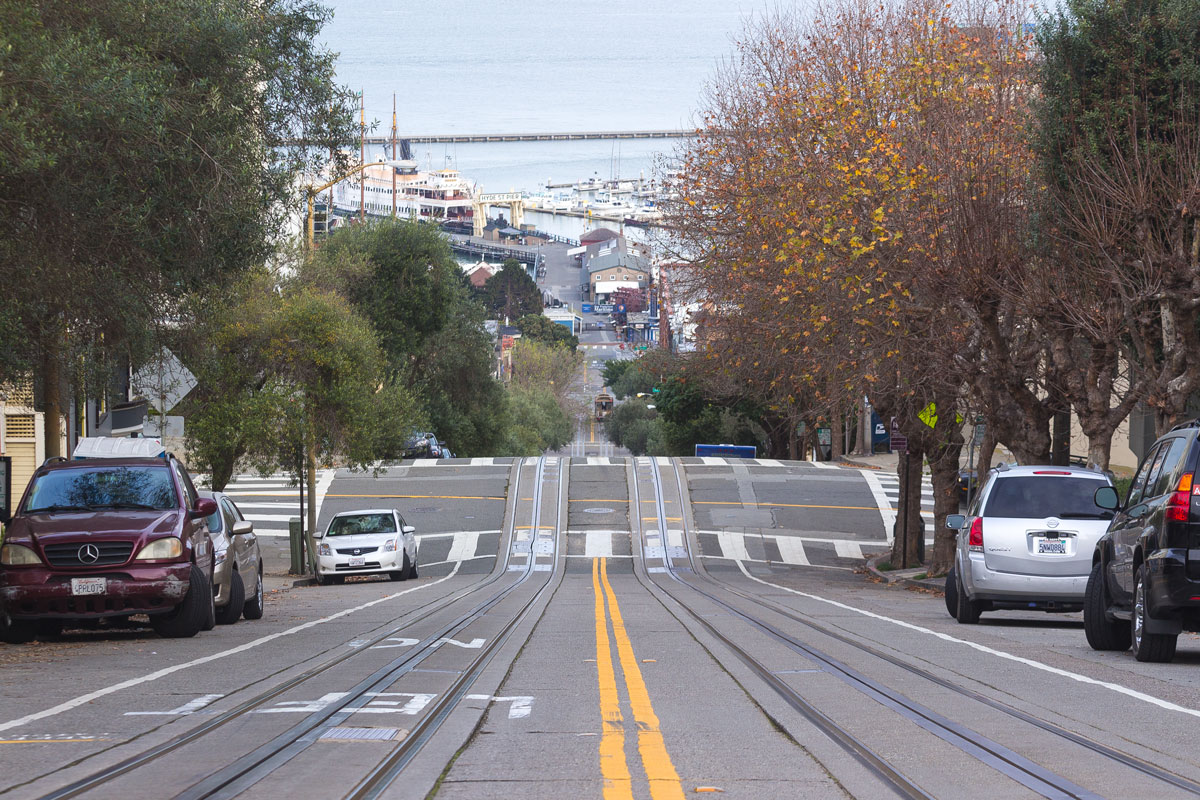
Throughout the 20th century, there was a gradual replacement of trams with buses, which were able to conquer even the steepest inclines. Eventually, only three cable car lines remained, and it was a struggle for the residents to preserve them. These lines still operate in San Francisco to this day.
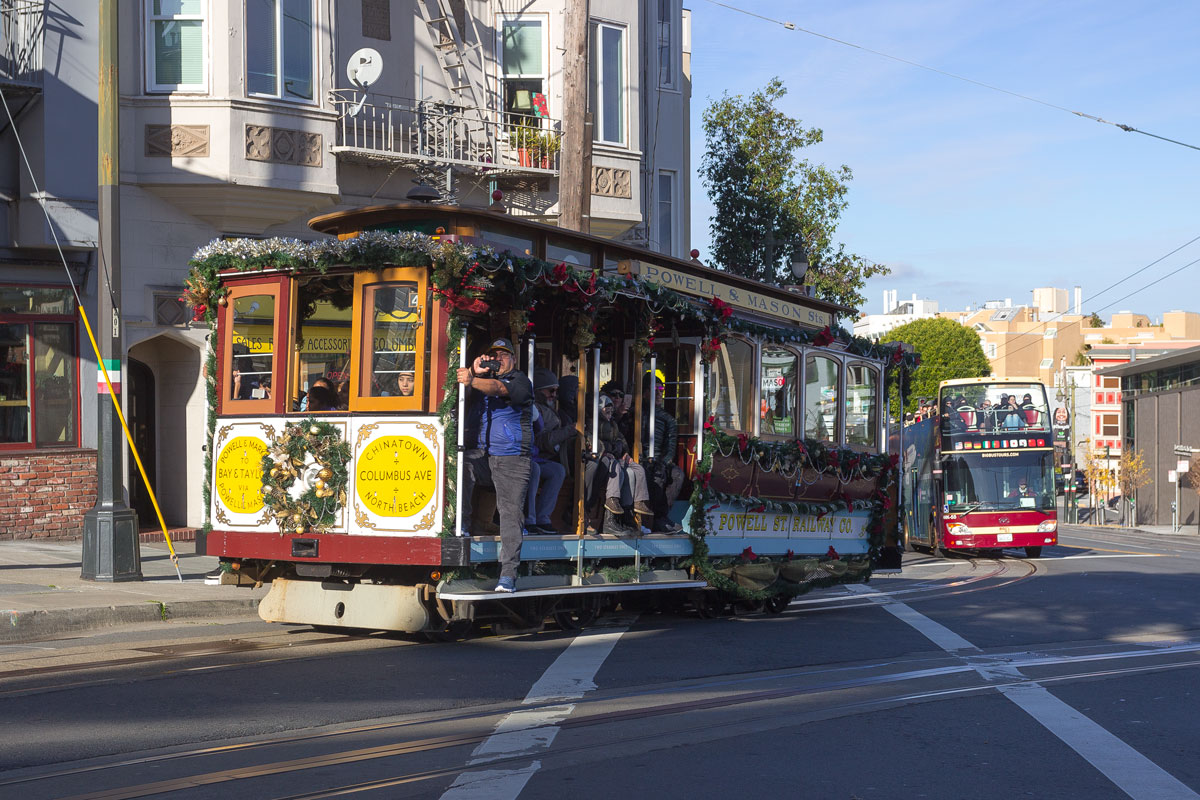
For some reason, people often say that the tram in San Francisco is just an entertainment for tourists. That’s not true. The tram is genuine and historical. It’s just inconvenient to ride on it. It’s small, expensive, runs infrequently, and slowly. That’s why mostly tourists ride the tram. But the tram itself is original.
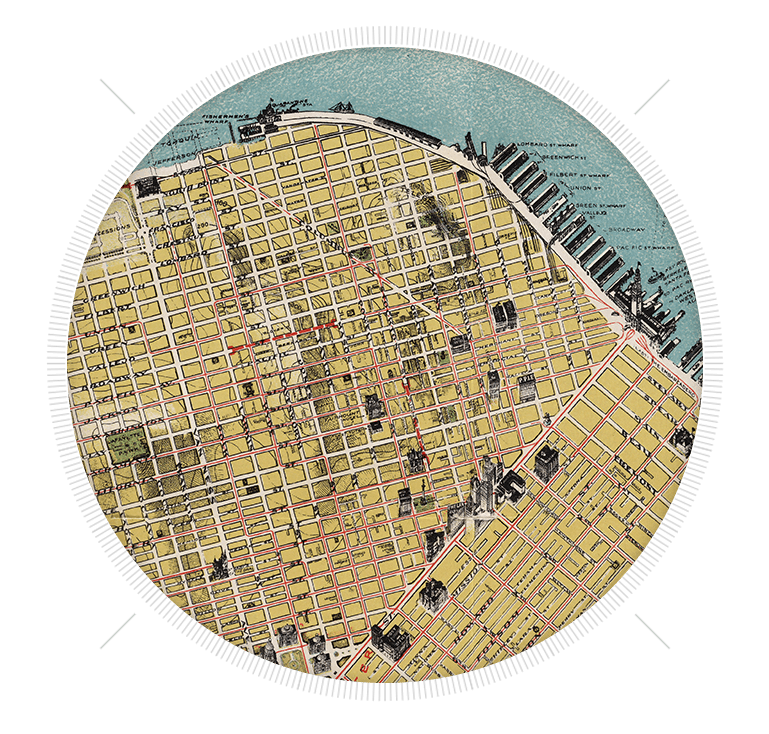
Russian Hill
However, the women made the strongest impression. It almost felt like rubbing one's eyes to ensure that such women could exist in 1936, not in some remote Old Russian backwater, but in petrol-electric San Francisco, on the other side of the world. Among them, we saw Russian peasant women, fair-faced and rosy-cheeked, dressed in fine festive blouses with puffy sleeves and broad skirts, the kind of fashion that had been brought over from Russia and had remained unchanged in San Francisco. We also noticed tall elderly women with shrewd eyes, wearing calico scarves. That's not all, where did they get calico in this bustling city!
The women spoke softly and melodically, and as expected, greeted us with a gentle handshake. Many of them couldn't speak English well, despite having lived in San Francisco for most of their lives. The gathering resembled an old village wedding: everyone was present, yet the merriment hadn't yet begun.
It seems I will be the first to say that Ilf and Petrov’s “One-Storey America” is a monstrous jumble of fiction and mistakes.
Russians never settled on Russian Hill.
Ilf and Petrov write that the hill became known as Russian Hill because of Russian immigrants who arrived here after the revolution. That’s not true. The hill received its name in the 19th century due to an old cemetery with tombstones featuring Cyrillic inscriptions.
Five hundred families, as written by the authors, did arrive in America after the 1905 revolution. However, they did not settle on Russian Hill but dispersed throughout California. The same families that ended up in San Francisco and built the “Molokan Church”, did this on Potrero Hill — in a different part of the city!
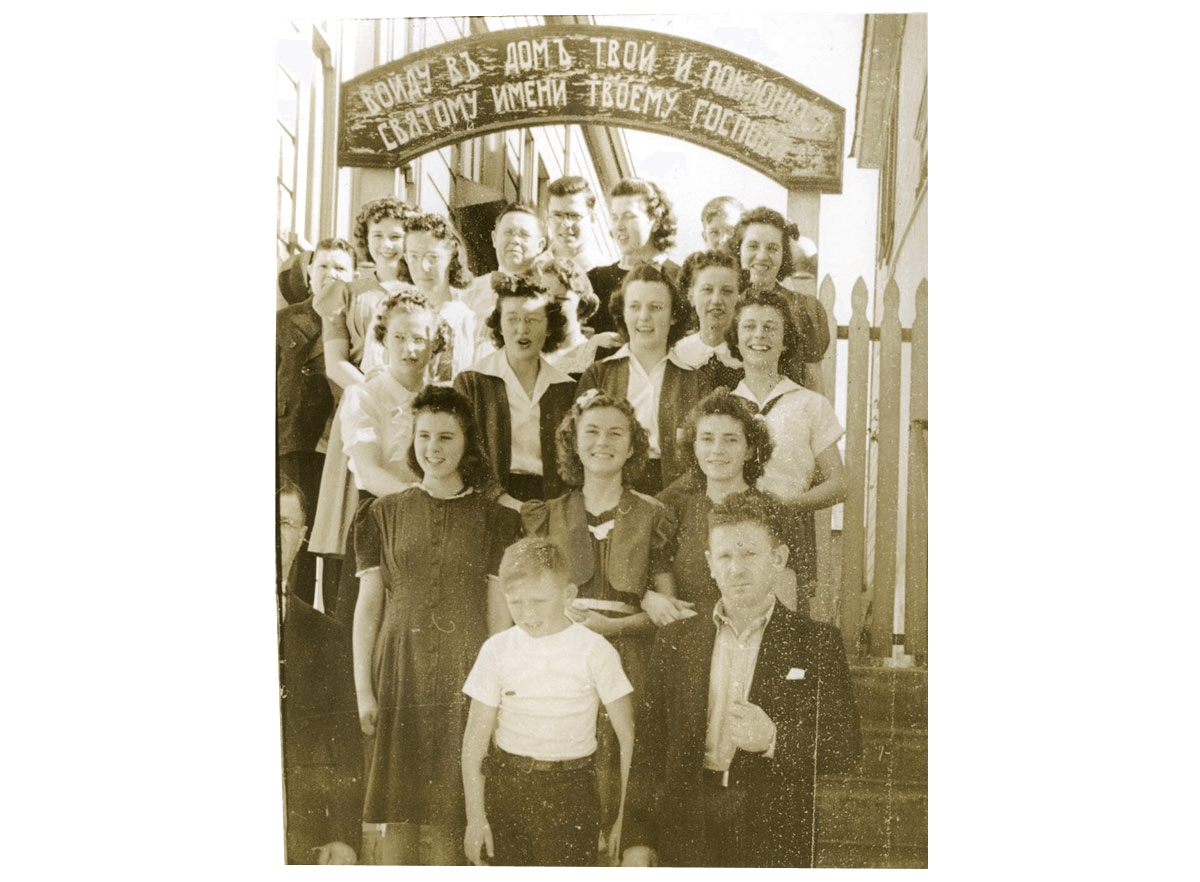
Russian Hill did resemble the outskirts of Tula or Kaluga during Ilf and Petrov’s journey. Approximately half of San Francisco probably looked similar back then.
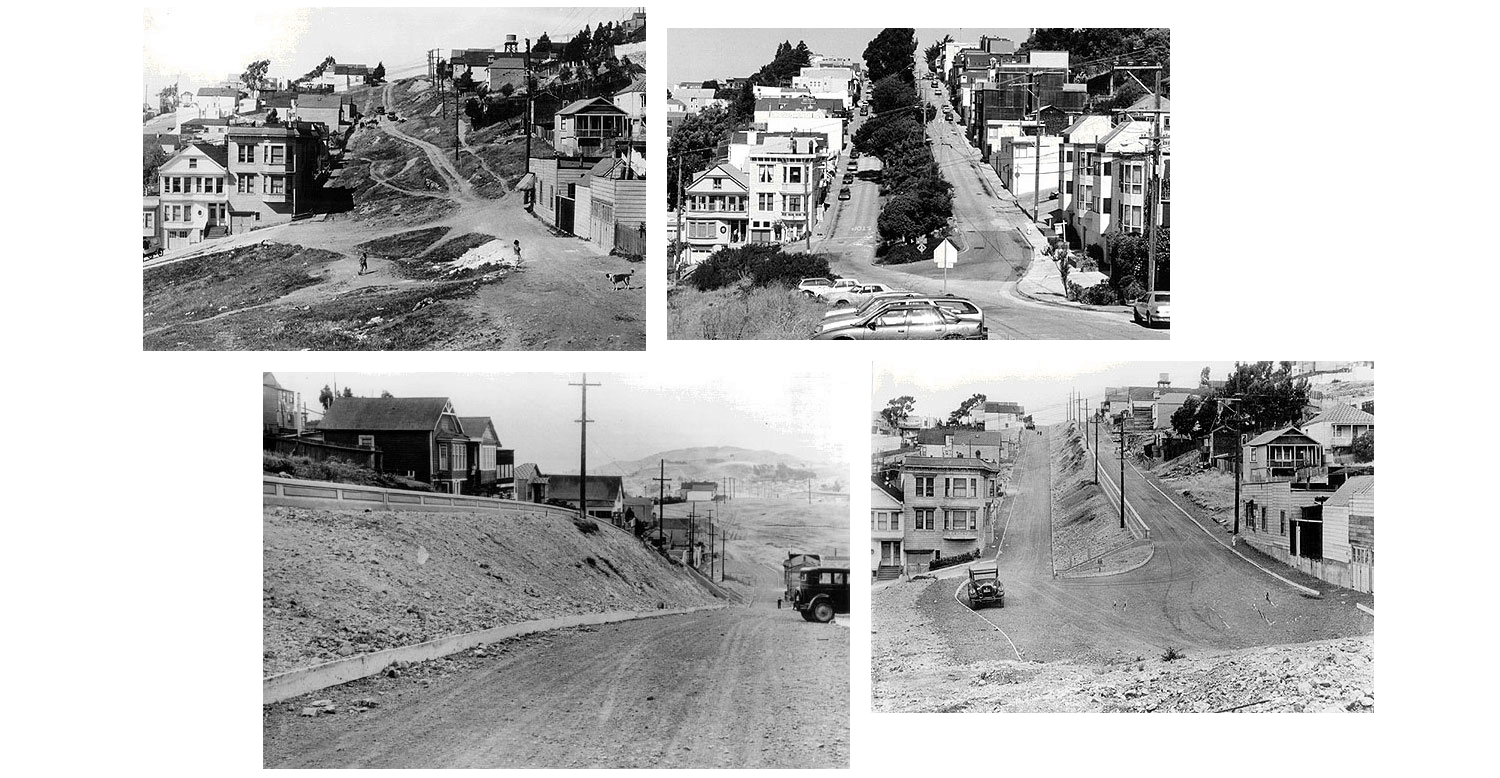
Let’s suppose, however, that the authors deliberately mixed Russian Hill and Potrero Hill to avoid confusing the reader with unnecessary details. Let’s even assume that the immigrants did indeed build a few houses in a Russian style and hung signs in the Russian language. But what do the authors write next?
The majority of the immigrants were Molokans, a persecuted religious sect in the Russian Empire. As Ilf and Petrov claim, in the “spacious basement premises” where they were invited to descend, “portraits of Stalin, Kalinin, and Voroshilov” were hanging.
Apparently, the Molokans were so embittered by persecutions from the Orthodox Church that they hung a portrait of Stalin on the wall as a token of gratitude for the explosion of the Cathedral of Christ the Savior in Moscow that occurred several years ago. There is no other explanation for this phenomenon.
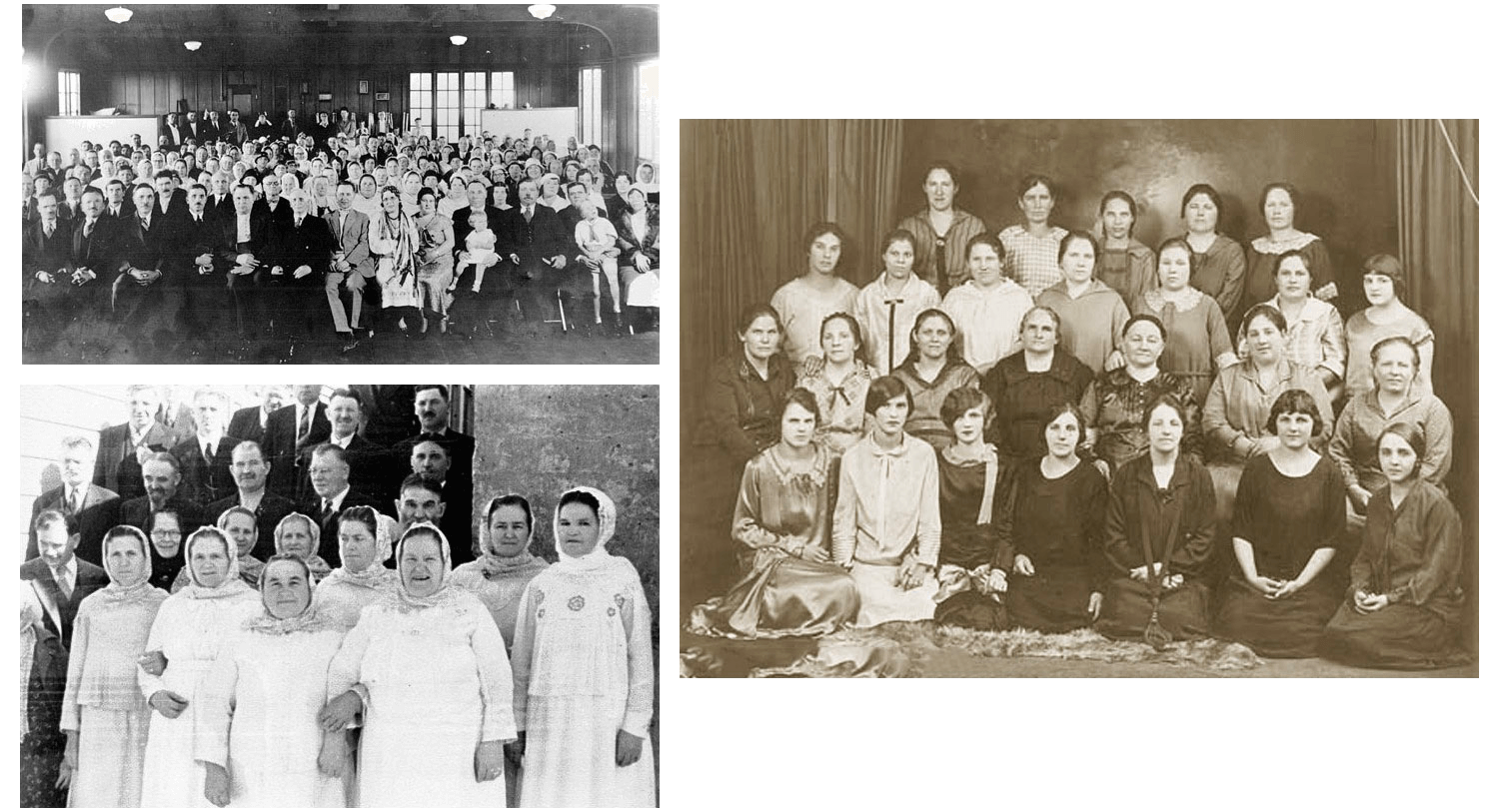
But what is most surprising is that Ilf, who brought back so many first-rate photographs from America, did not show a single photograph of such an important place as Russian Hill. Perhaps this is because he simply made up half of the story.
⁂
Russian Hill is a famous place in San Francisco. Here you can find Lombard Street, the one that winds its way through the entire hill.
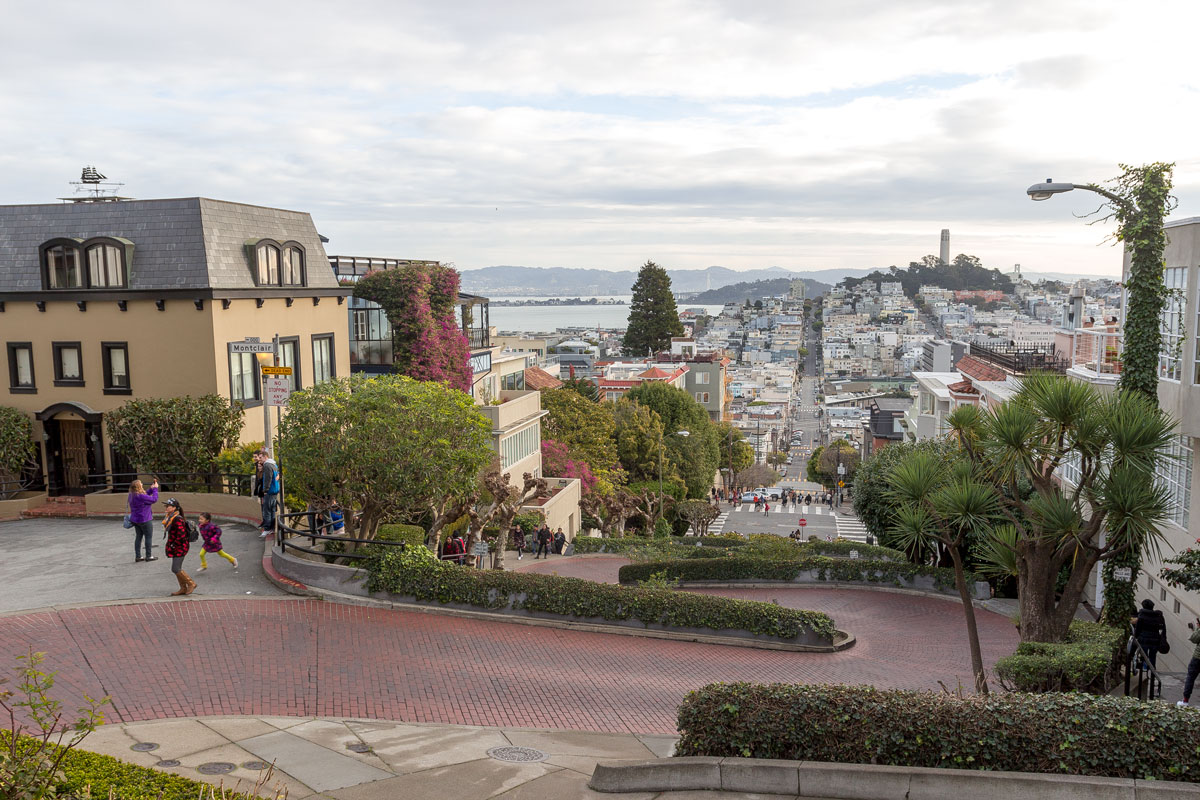
Absolutely crazy place.

Someone is constantly driving or walking along the street. It’s impossible to seriously drive through Lombard, so mostly tourists and local eccentrics ride here. The windows of residential houses face directly onto the street. Someone might not be very lucky to live here.
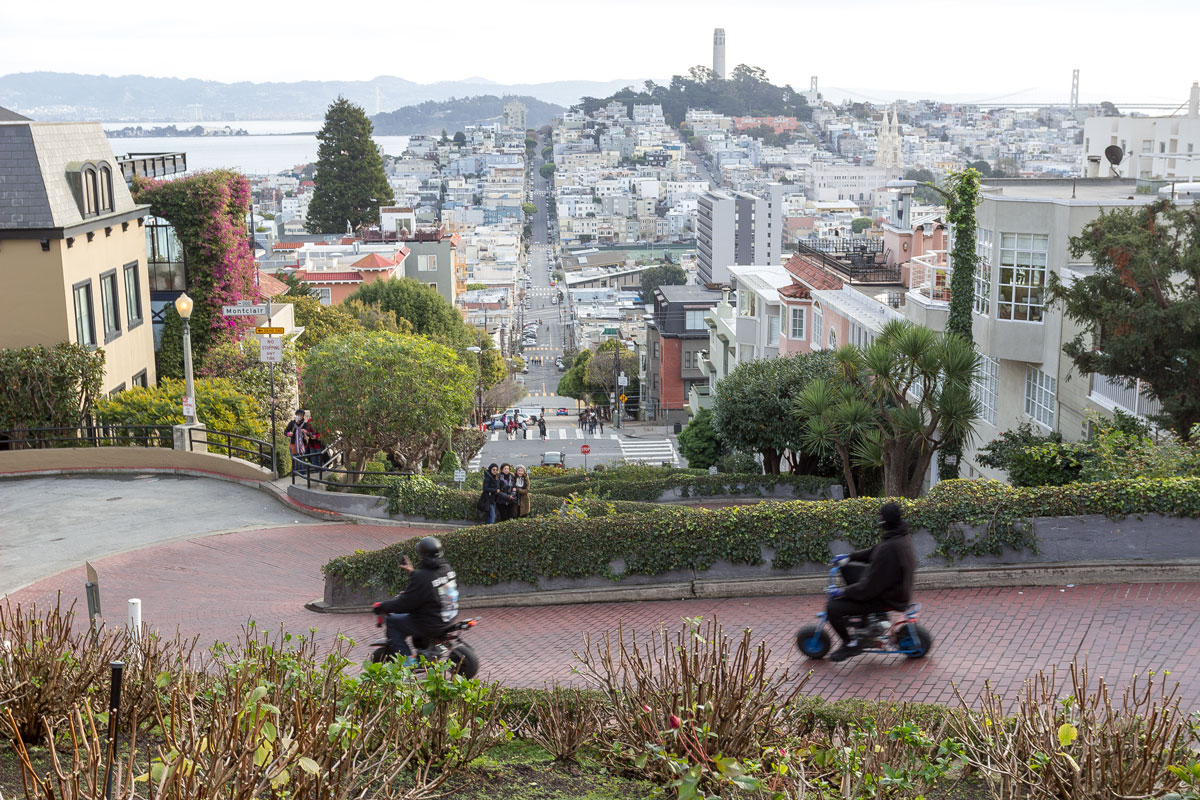
There is nothing more remarkable about Russian Hill.

Chinatown
People from all over the world live in San Francisco: Russians, Armenians, Italians, Japanese, Germans, Mexicans. Often, people from the same country settle next to each other. Therefore, like any American city, San Francisco is divided into ethnic neighborhoods.
Everyone has their own neighborhood in San Francisco. Russians settle in the district called “Little Russia,” Vietnamese reside in “Little Saigon,” Jewish community can be found in Presidio, and Japanese have Japantown.
But the Chinese make their presence felt the strongest. The Chinatown is located in the heart of the city, and there they have their own atmosphere.

Indeed, it resembles China in some way, except there is less litter and fewer people.
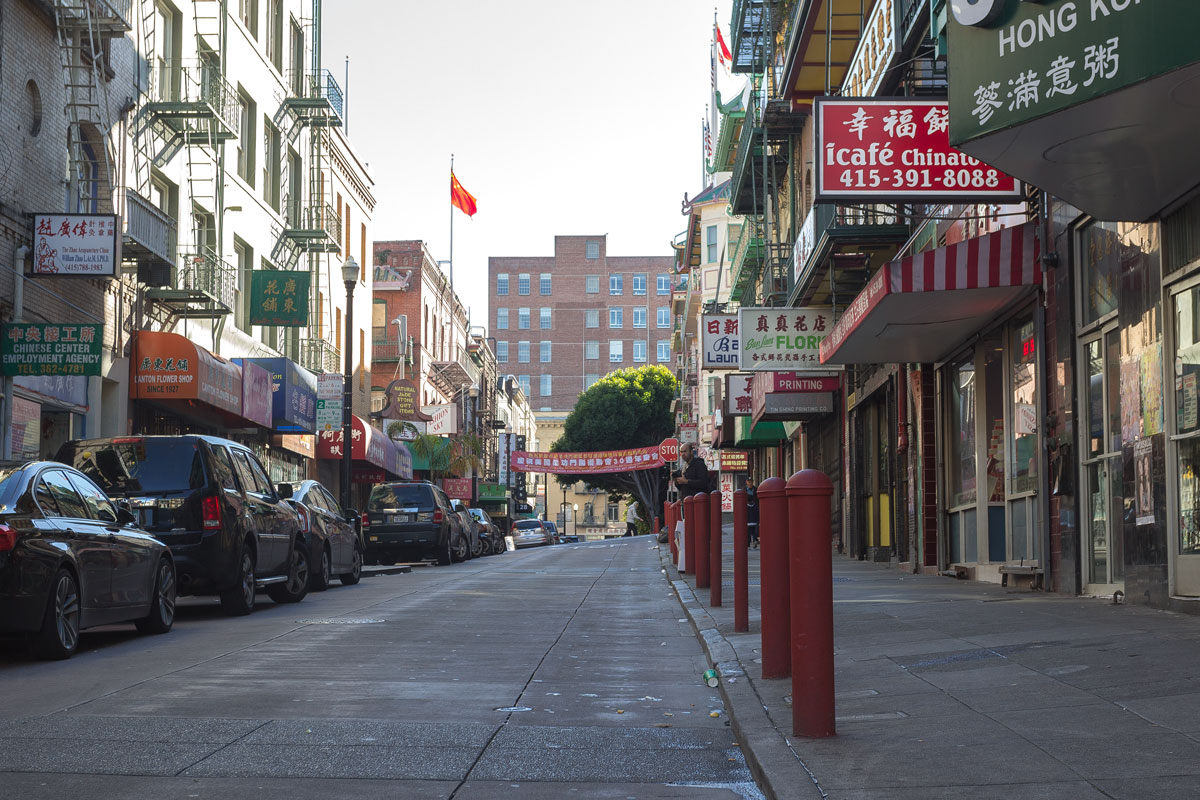
In the Chinatown, everything is in Chinese. Not every signboard has a translation.
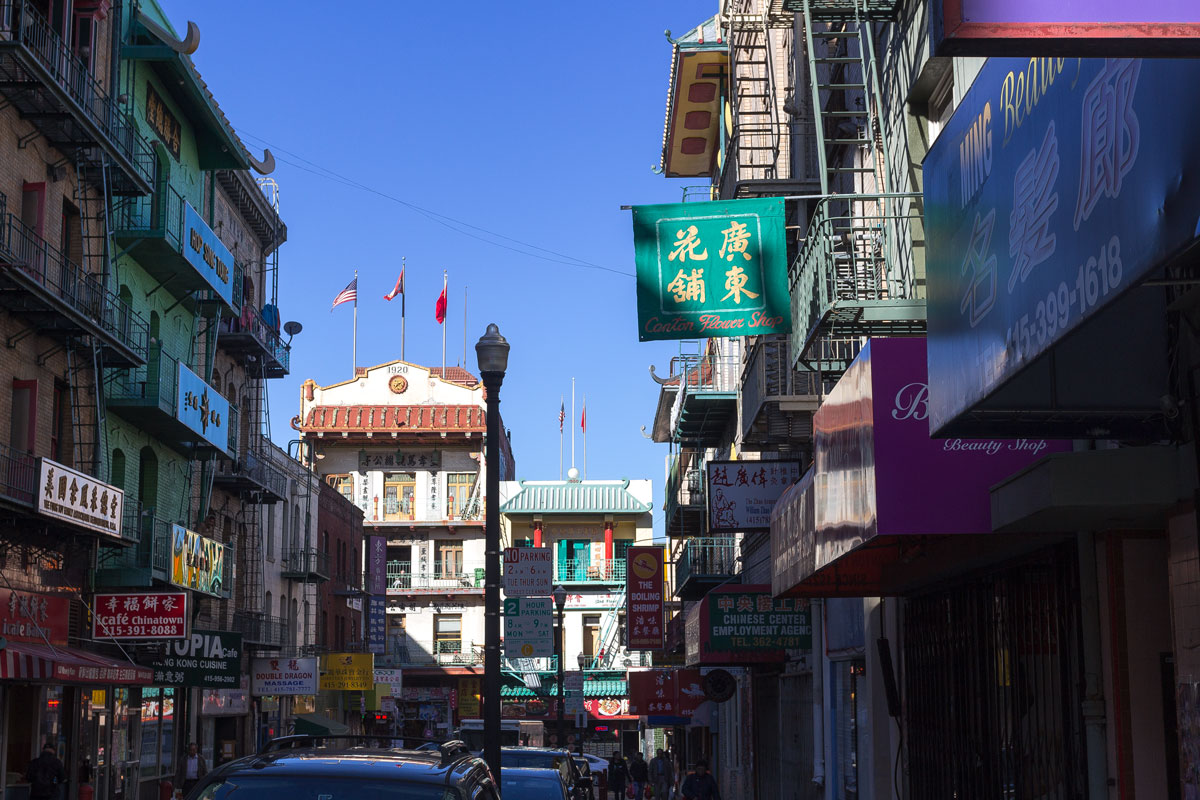
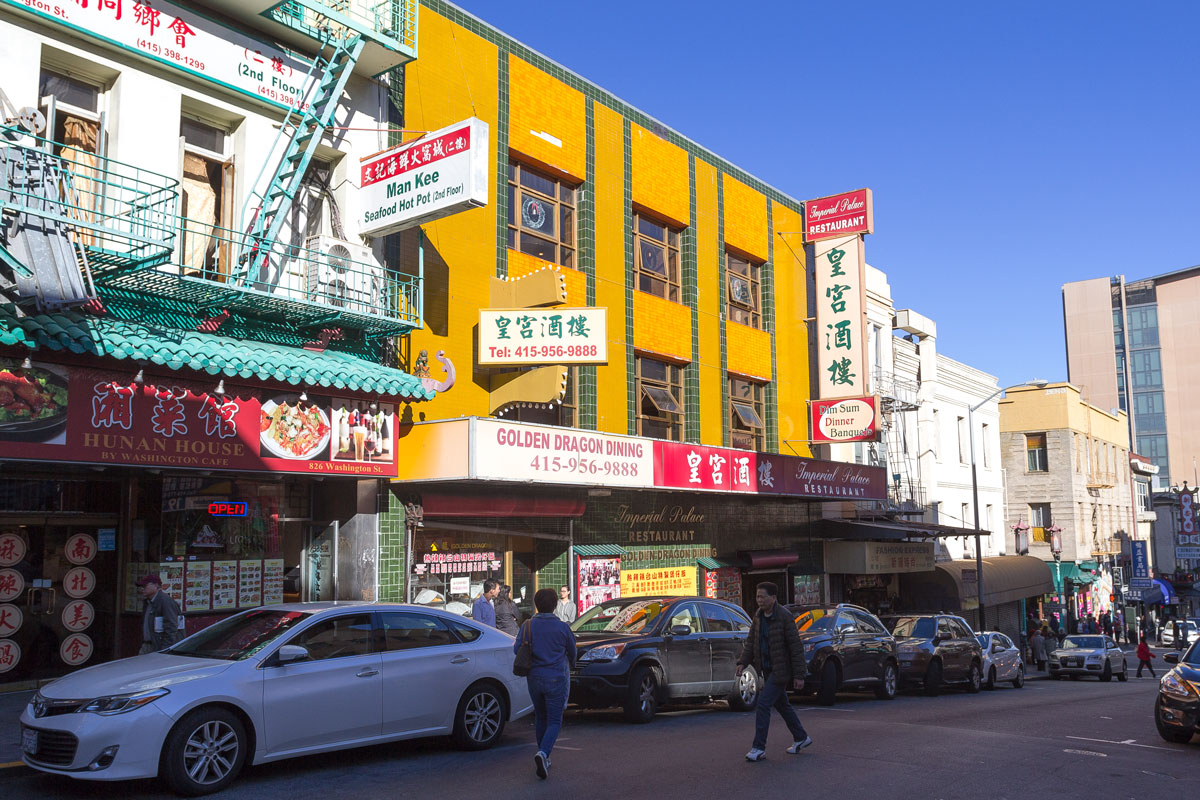
The Chinese brought their architecture with them. Some of the buildings were constructed as early as the beginning of the 20th century.
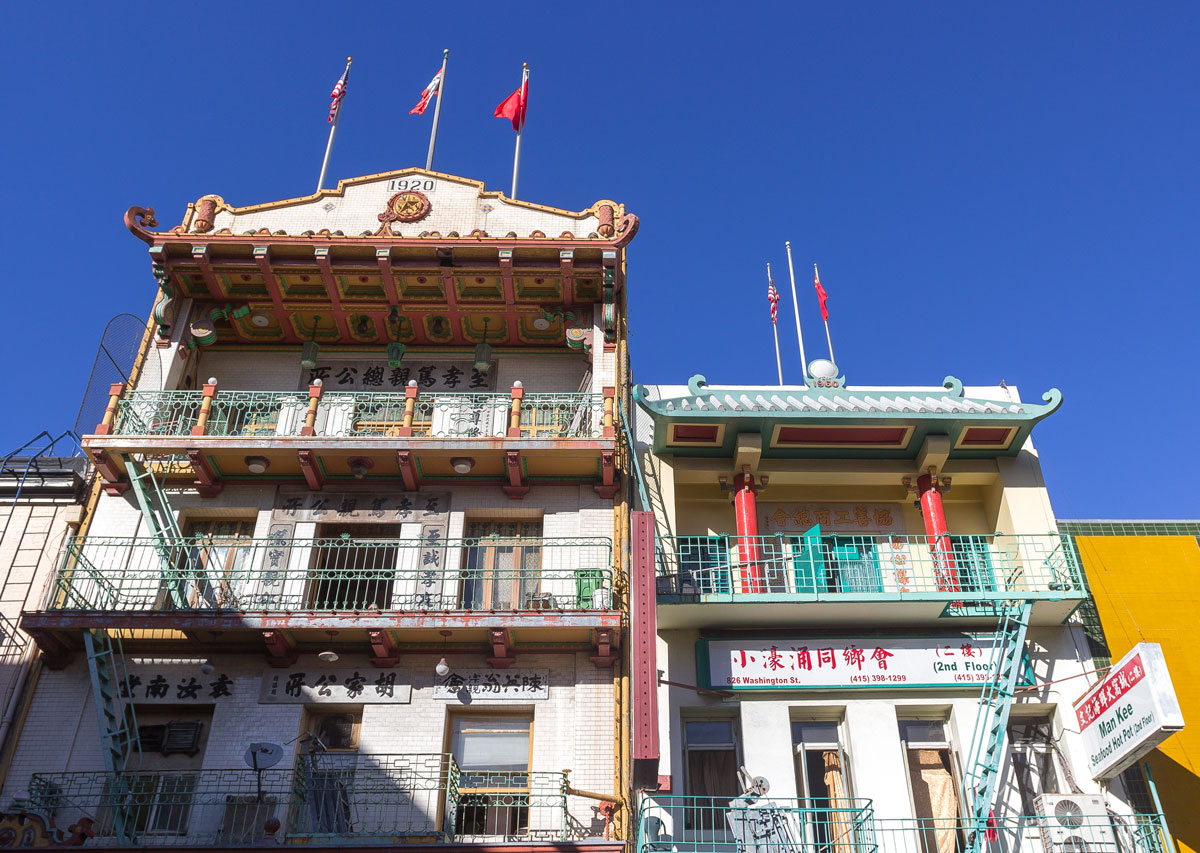
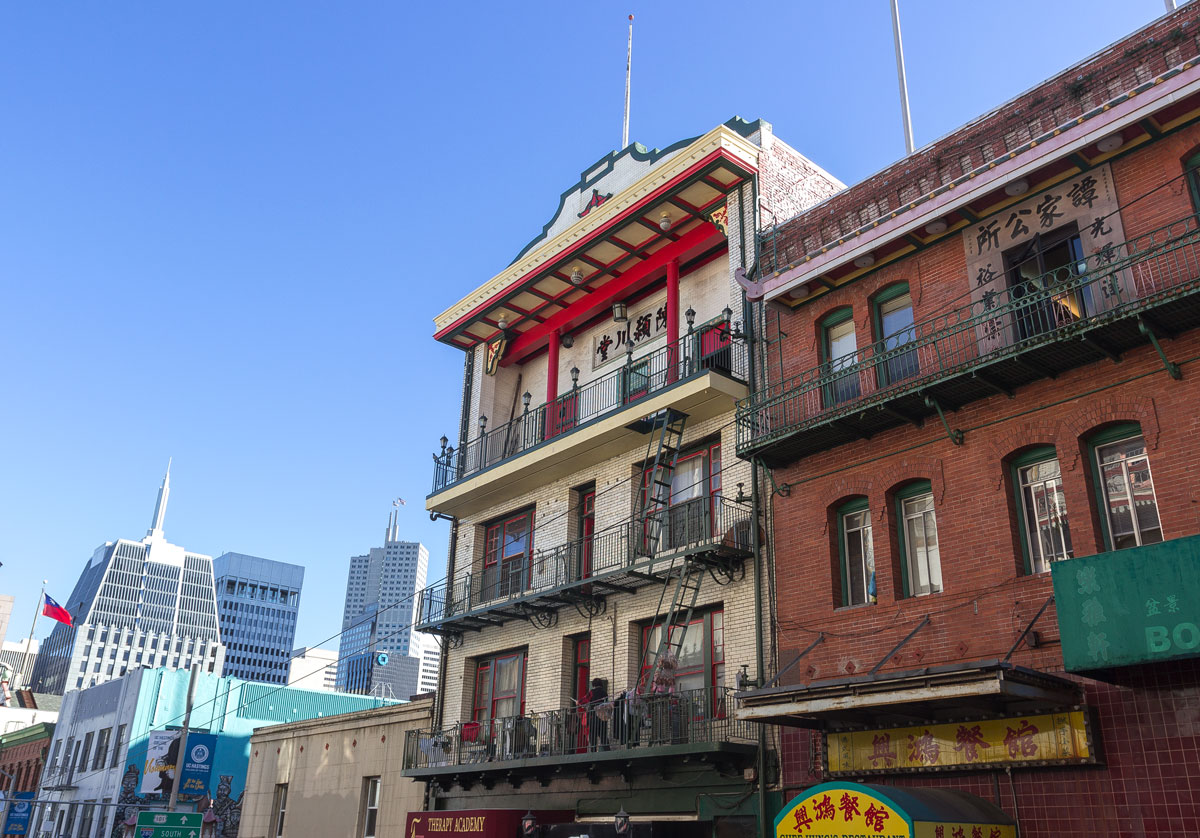
They also brought narrow passageways with steep staircases.
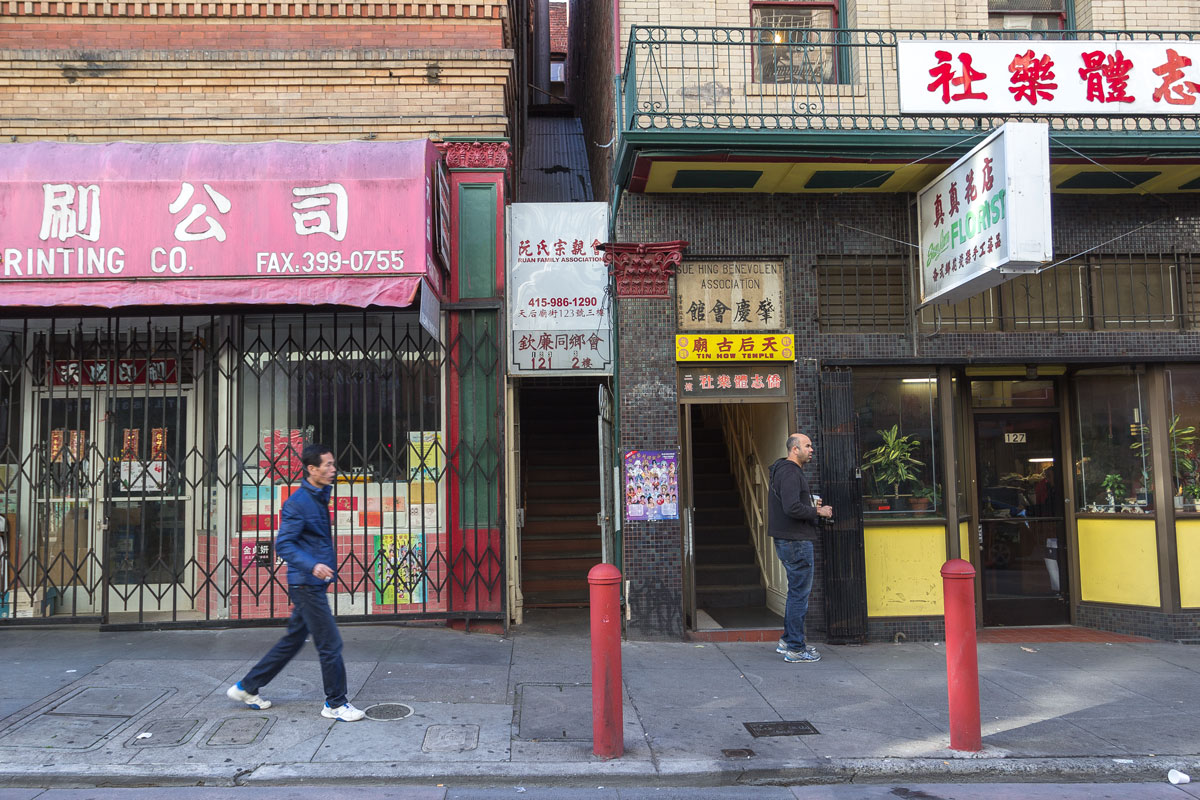
They brought doors, canopies, and decorative elements.
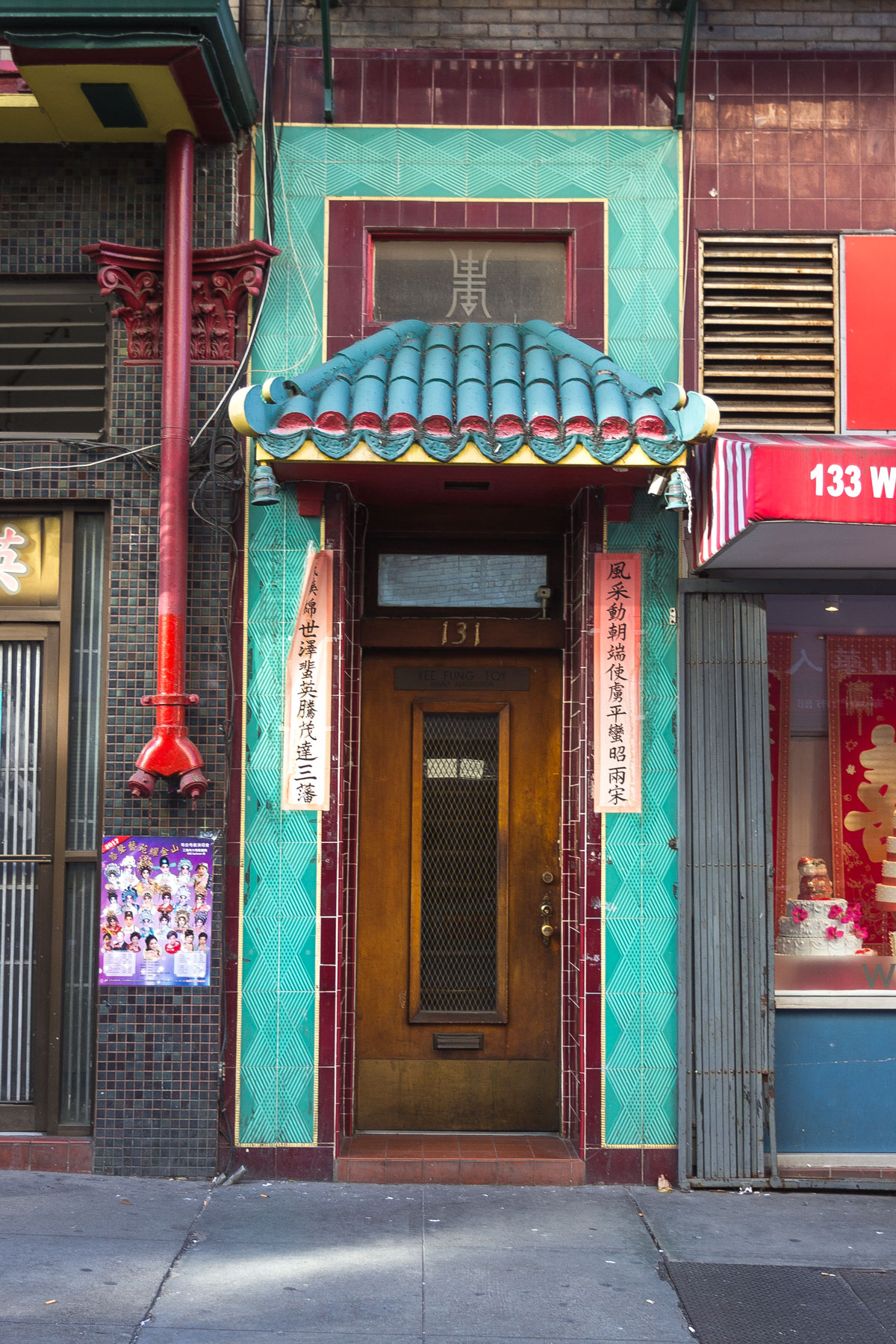
They brought along dirty alleyways, as if the United States lacked them without the Chinese.
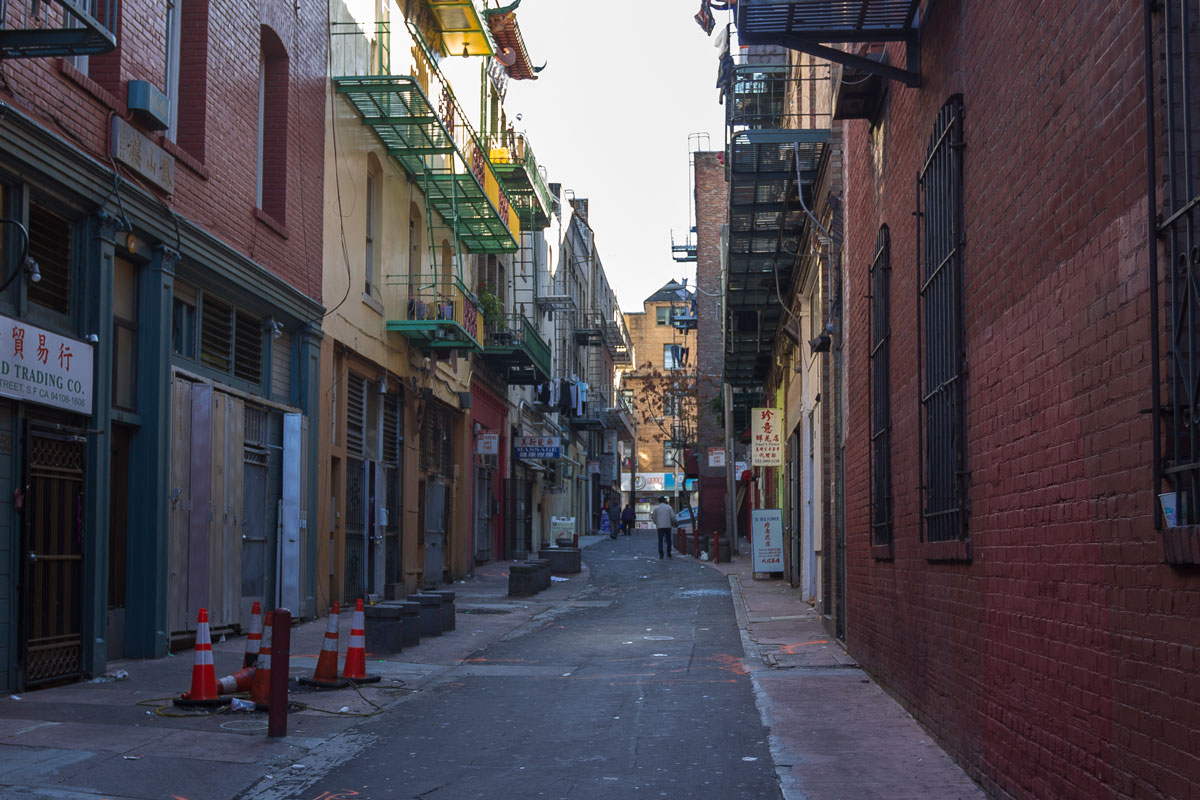
They also brought and installed fire escapes, balconies, curved roof ends, and flags — to make everyone envious.

But the most important thing that the Chinese brought to San Francisco is the Chinese people themselves.

One-third of San Francisco’s population consists of individuals from Asian countries. Around 22% are Chinese, making it the largest community in the city. For comparison, African Americans account for only 6% of San Francisco’s residents.

Chinese people started actively settling in San Francisco as early as 1860 when the city was the only port receiving immigrants from China. The second wave of migration occurred 100 years later.

Currently, more than 100,000 people live in Chinatown. This is 7 times higher than the average population density in San Francisco. It truly represents an authentic Chinese experience.
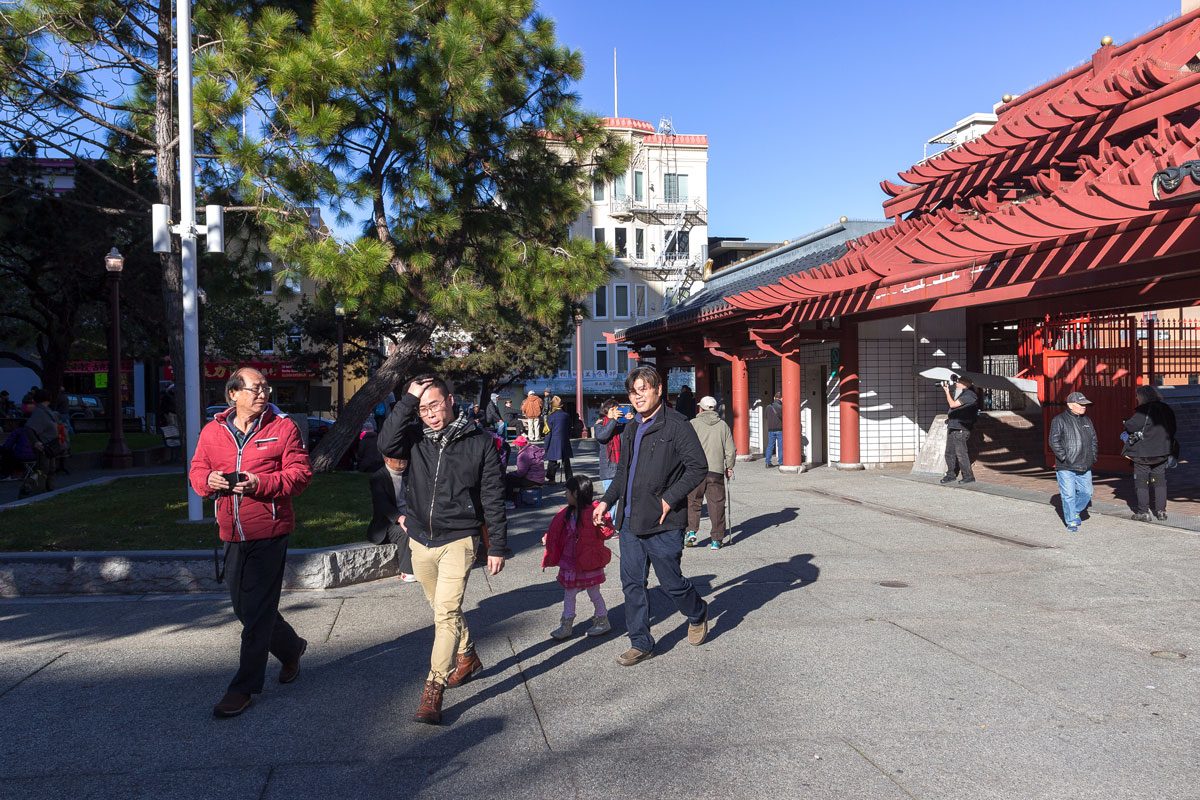
The heart of Chinatown is Portsmouth Square. Various ensembles and rallies constantly gather there. Chinese grandfathers and grandmothers play chess, participate in rallies, and sing songs.
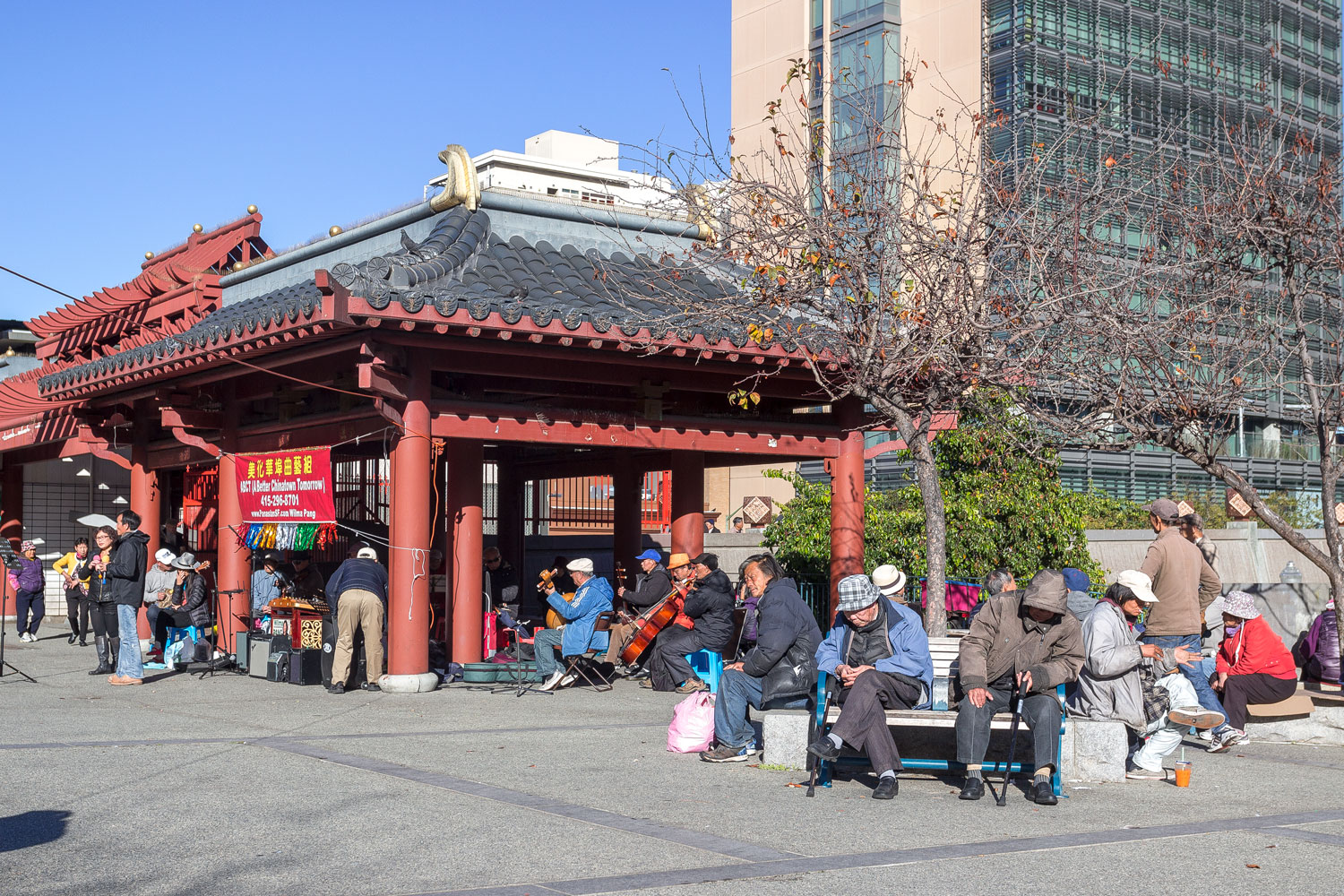
Vibrant party.
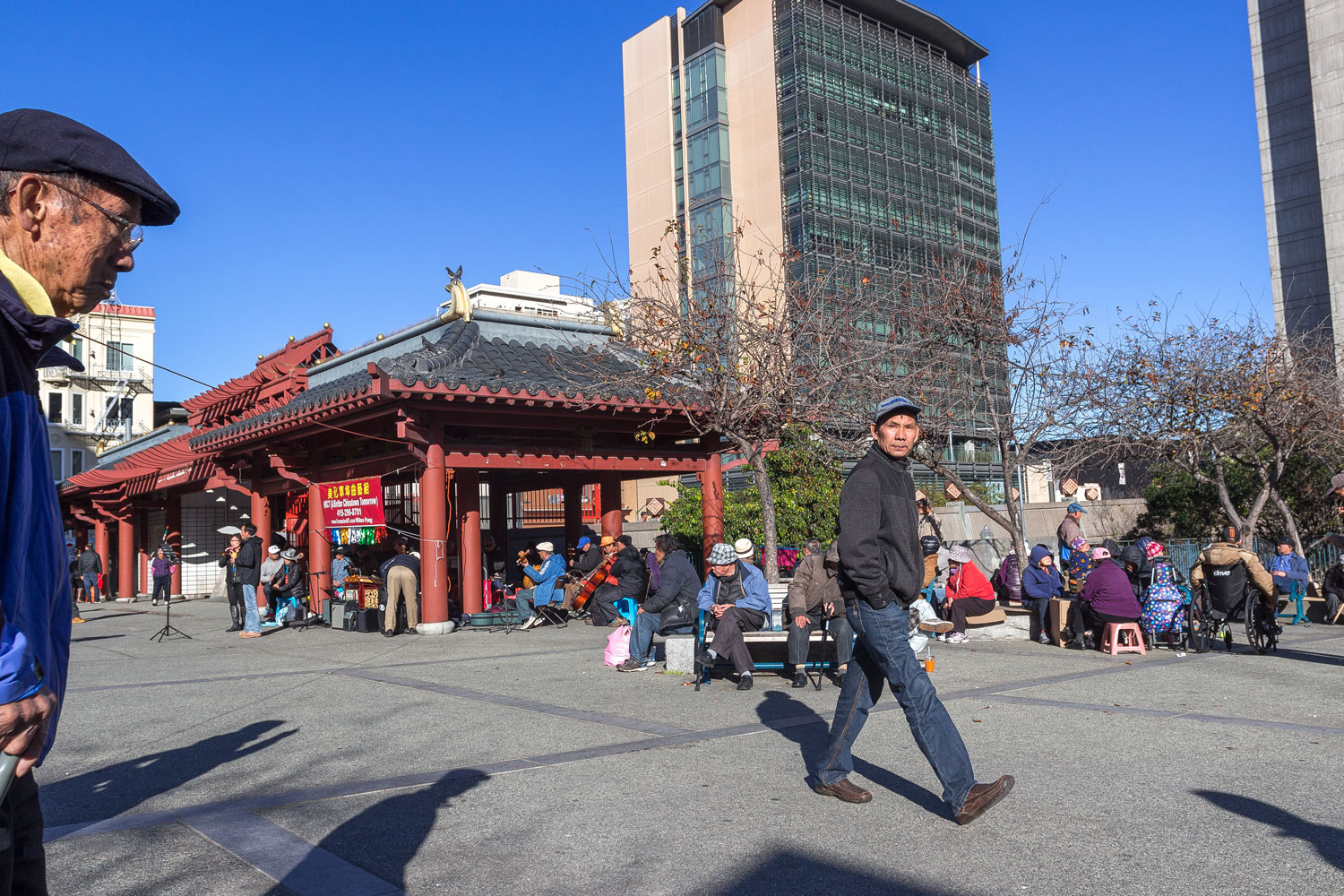
The square is adjacent closely to the business districts of San Francisco. The Chinese have chosen the most civil place for themselves.

Personally, I really love ethnic neighborhoods. Diversity makes the city vibrant and contradictory, and you can also enjoy various national cuisines there.
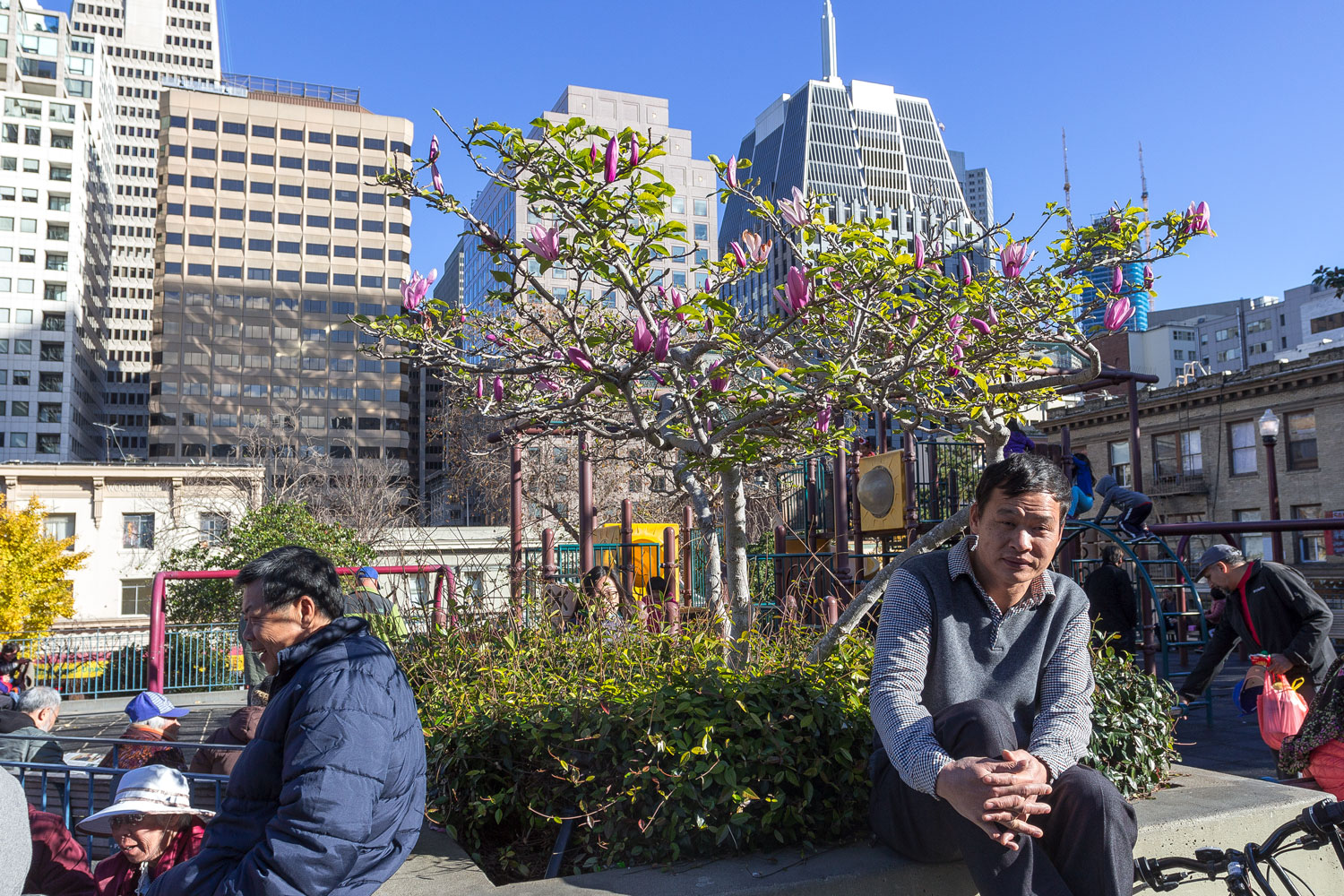

Downtown
On the way from Chinatown to downtown, you come across an incredibly steep house. It’s a small hippie neighborhood located next to Jack Kerouac Alley.
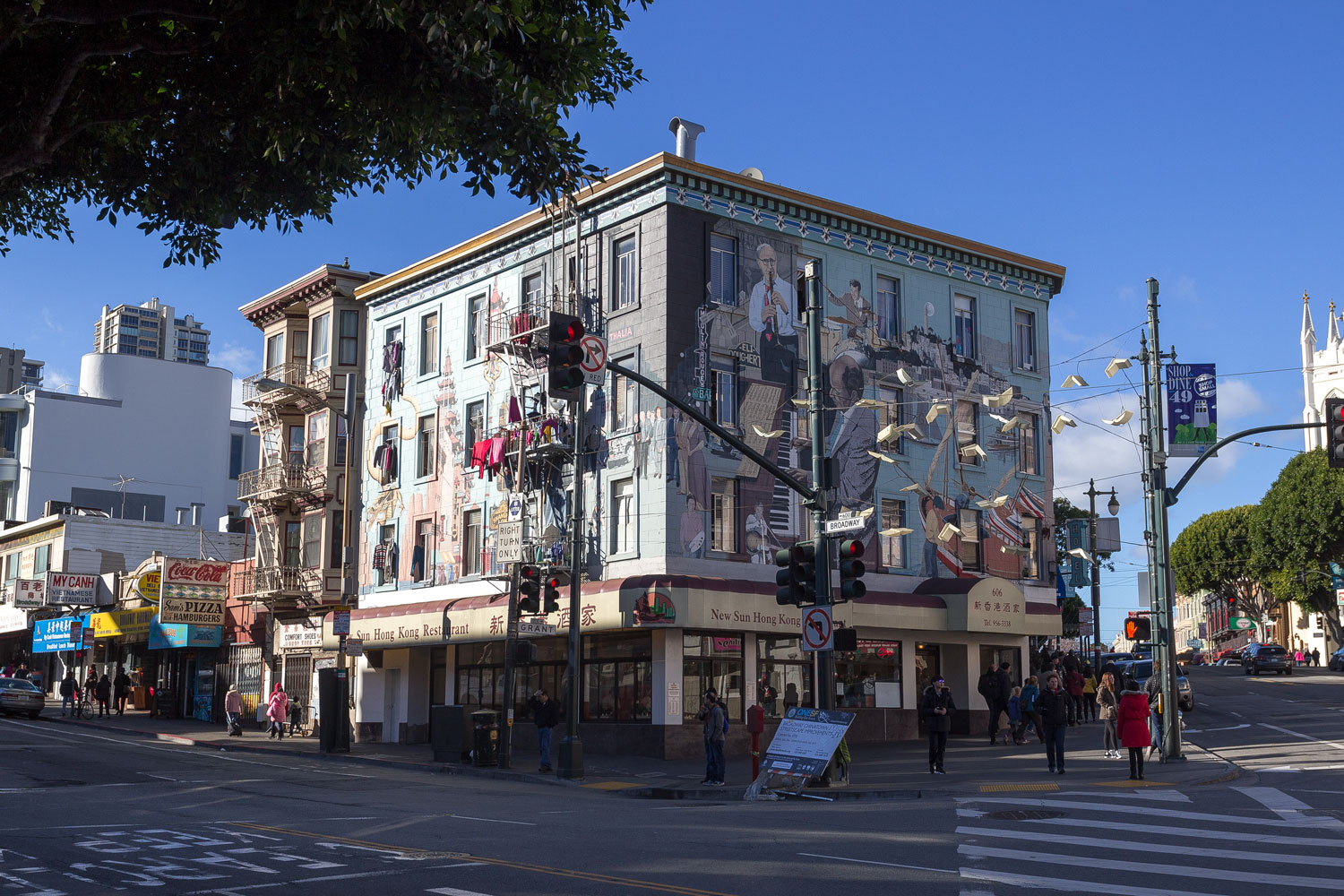
Jack Kerouac was a renowned writer of the Beat Generation. In short, they can be described as an extreme version of hippies. Burroughs was also associated with this movement, and Kerouac’s books influenced Hunter S. Thompson, who wrote “Fear and Loathing in Las Vegas.”
In general, the whole alley is dedicated to the beats and hippies. Here you can find a large bookstore and authentic cafes.


It’s not surprising that dealers are present in the alleyways, and the smell of marijuana lingers. It won’t be long before they become a thing of the past, as selling cannabis has been fully legalized in California.
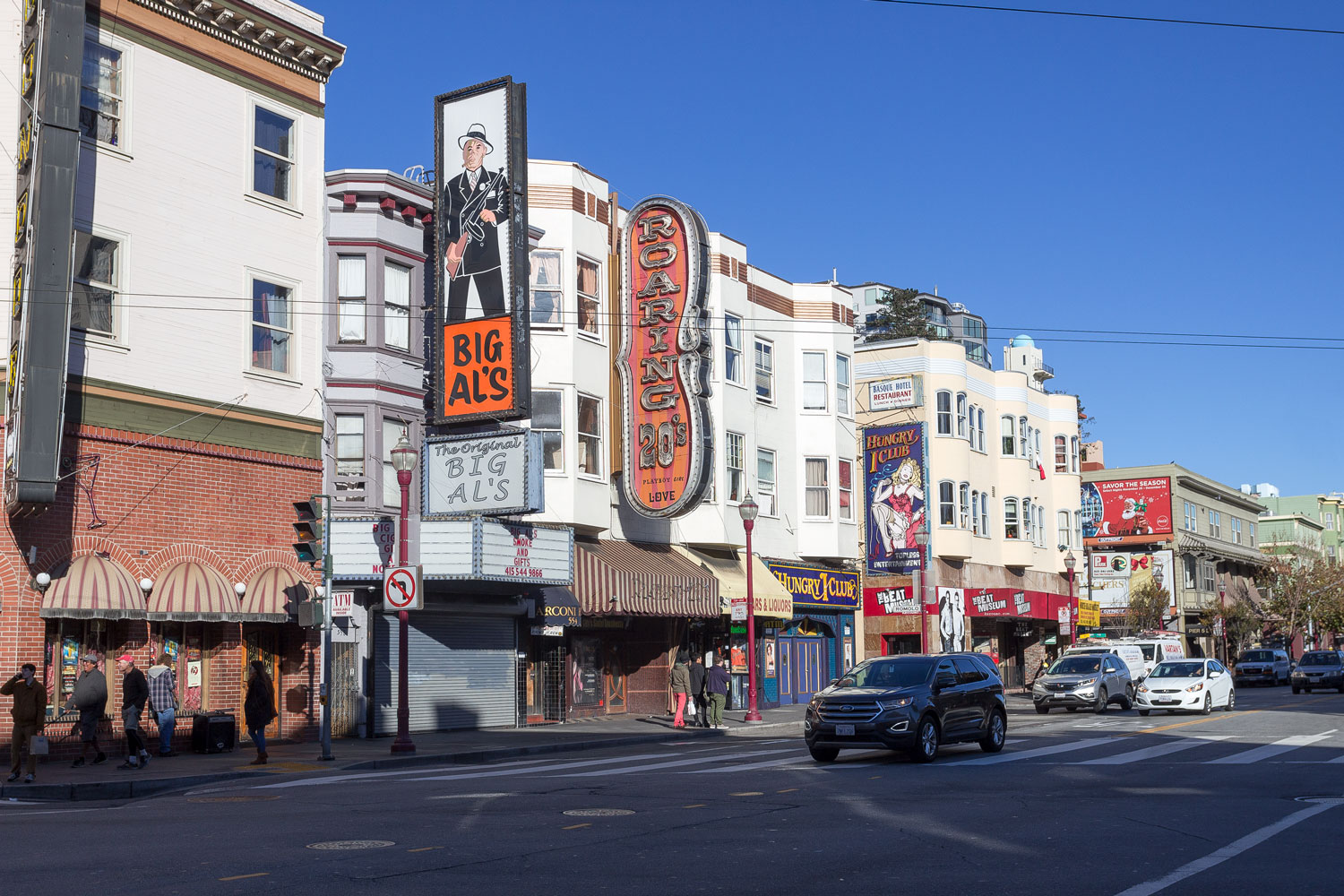
From the alley, downtown is not far away. As you approach it, the triangular shape of the greenish-copper Columbus Tower comes into view. The tower currently houses Francis Ford Coppola’s studio.
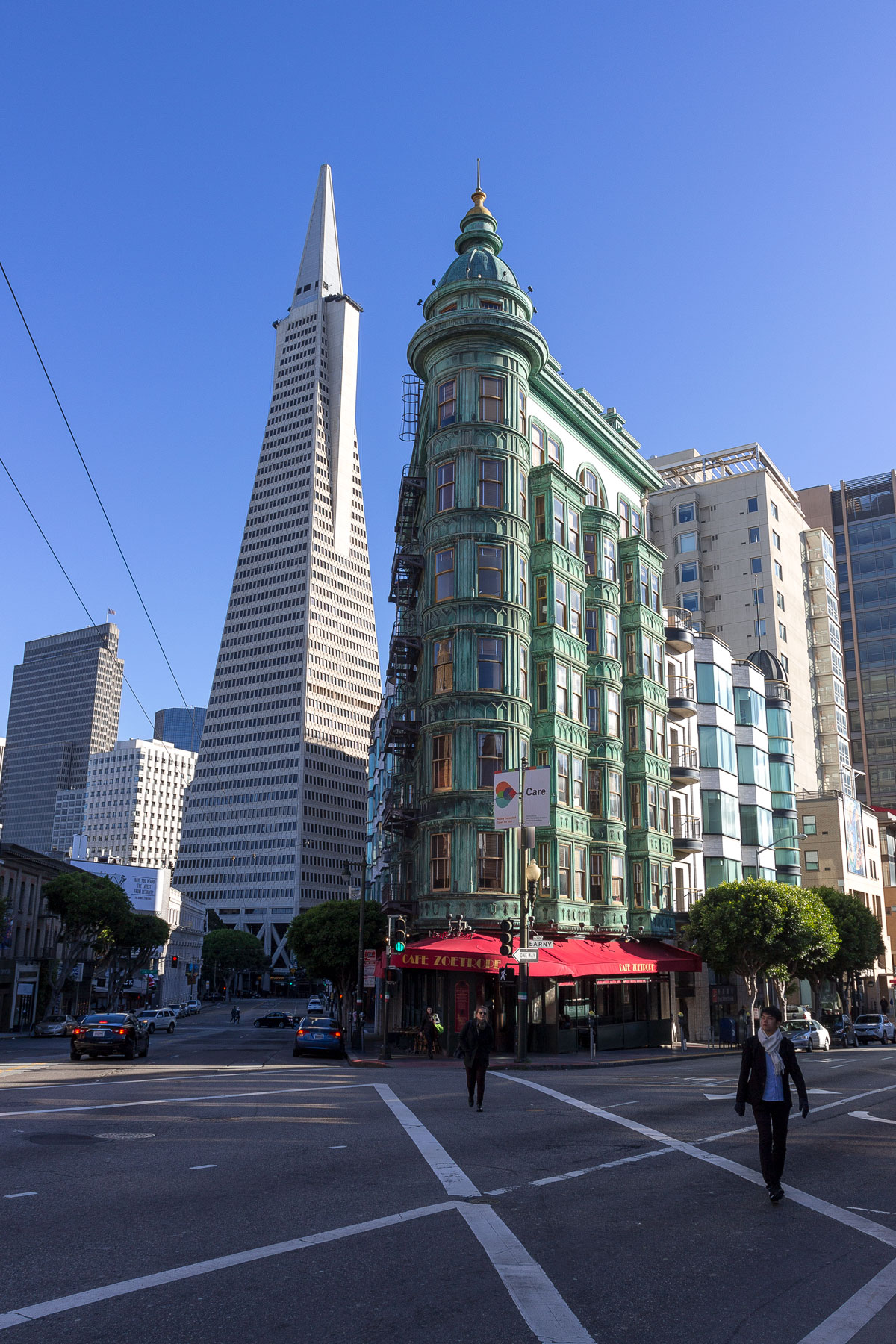
A similar building stands across. All of this echoes the famous triangular house in New York.
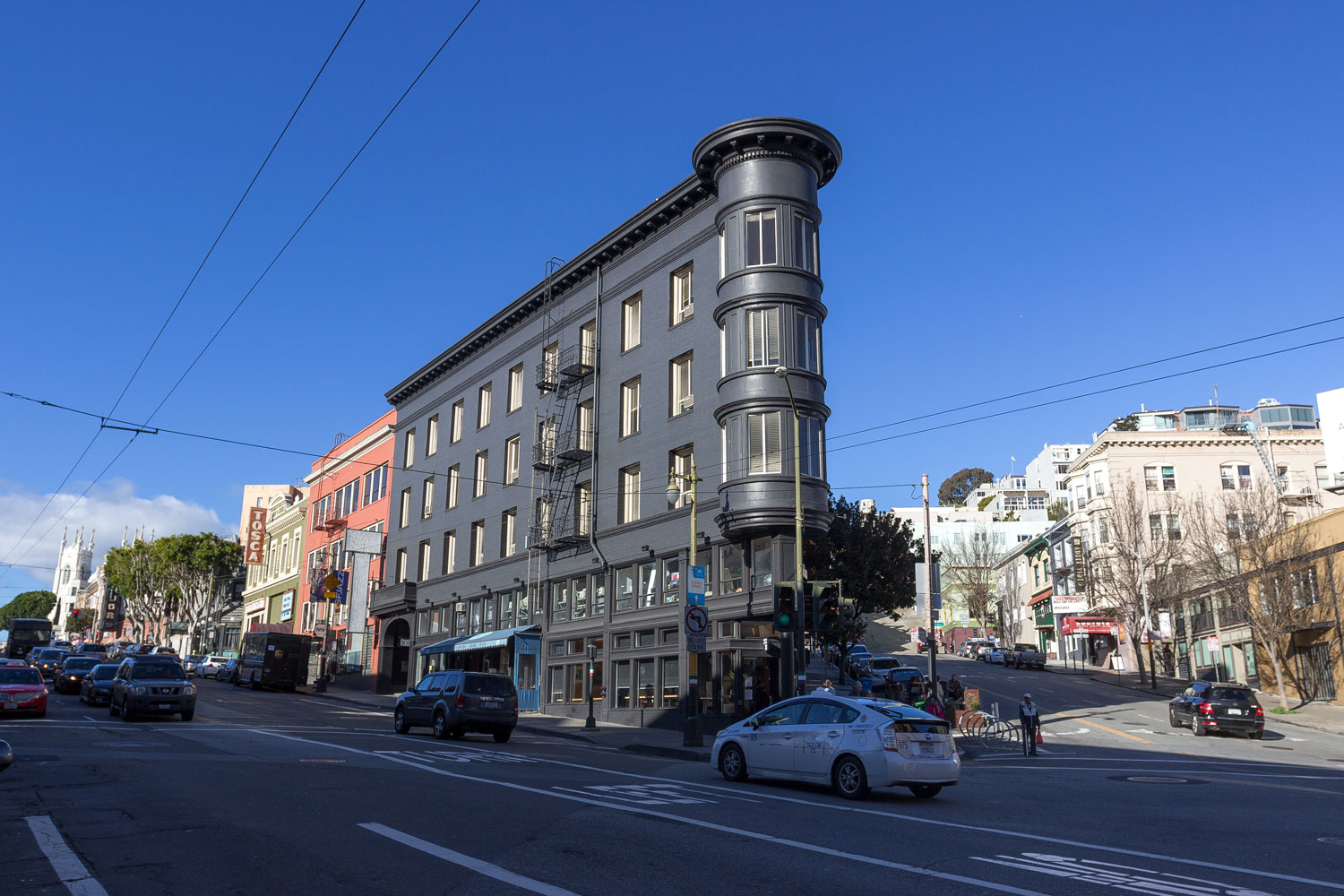
The main skyscraper of San Francisco is the Transamerica Pyramid. It is a completely unknown in other countries corporation that is engaged in insurance and investments.
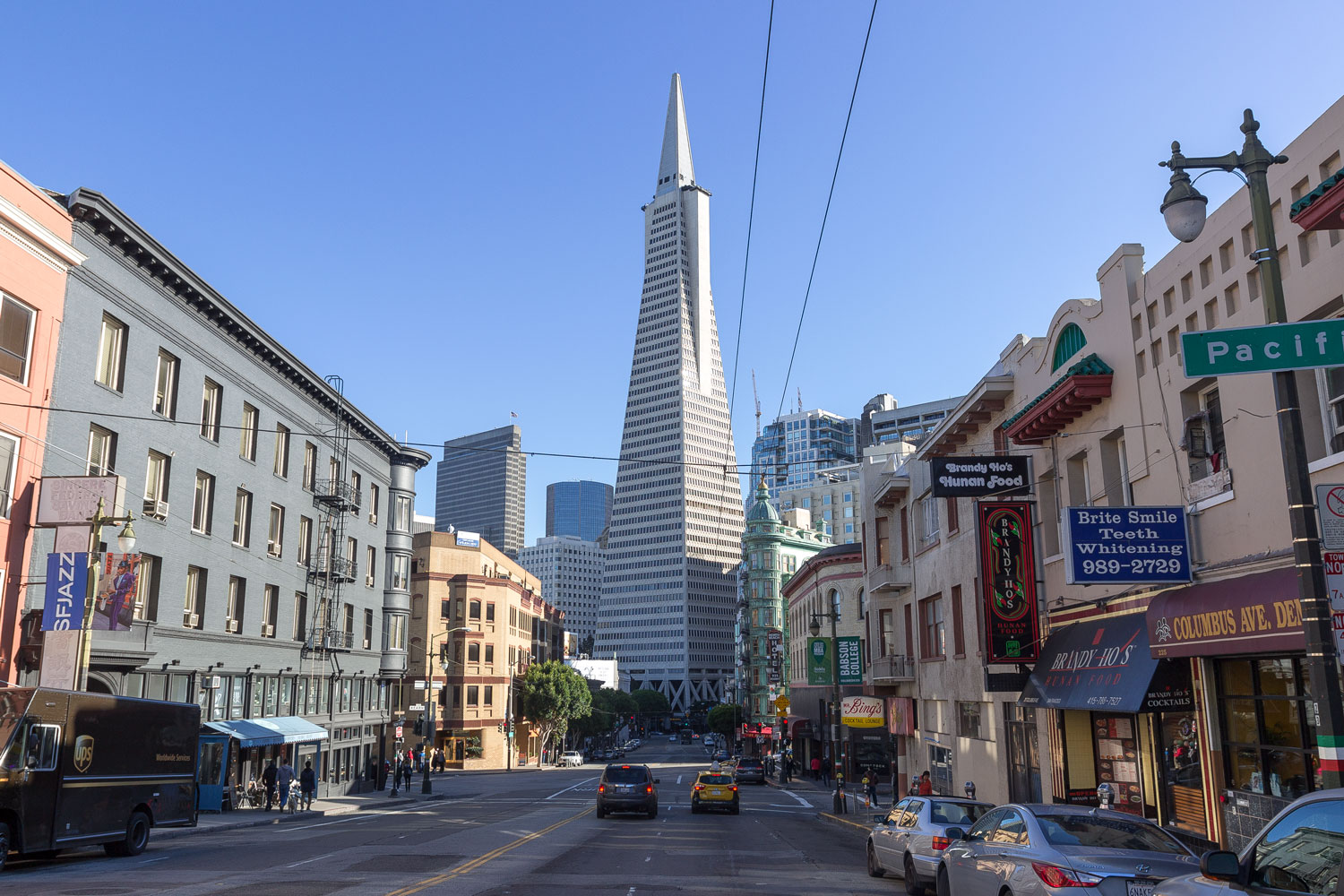
Skyscrapers in San Francisco are a soft sandy color.
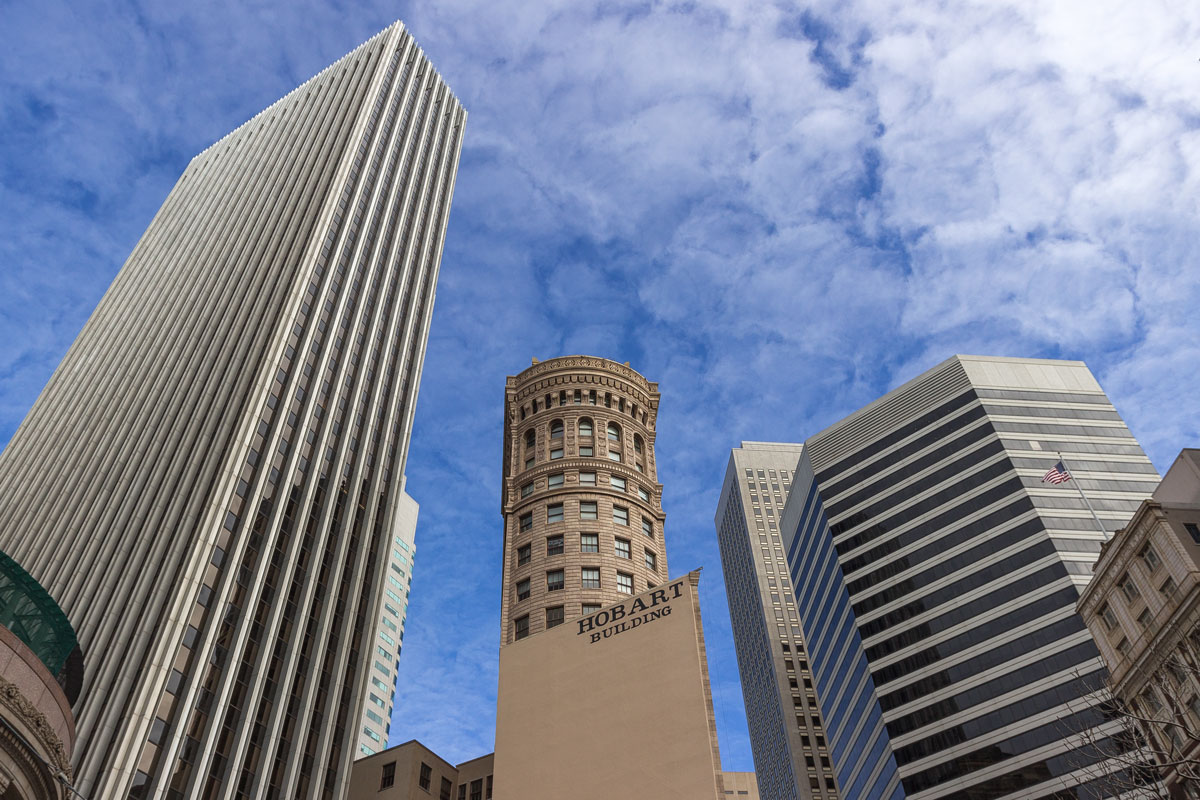
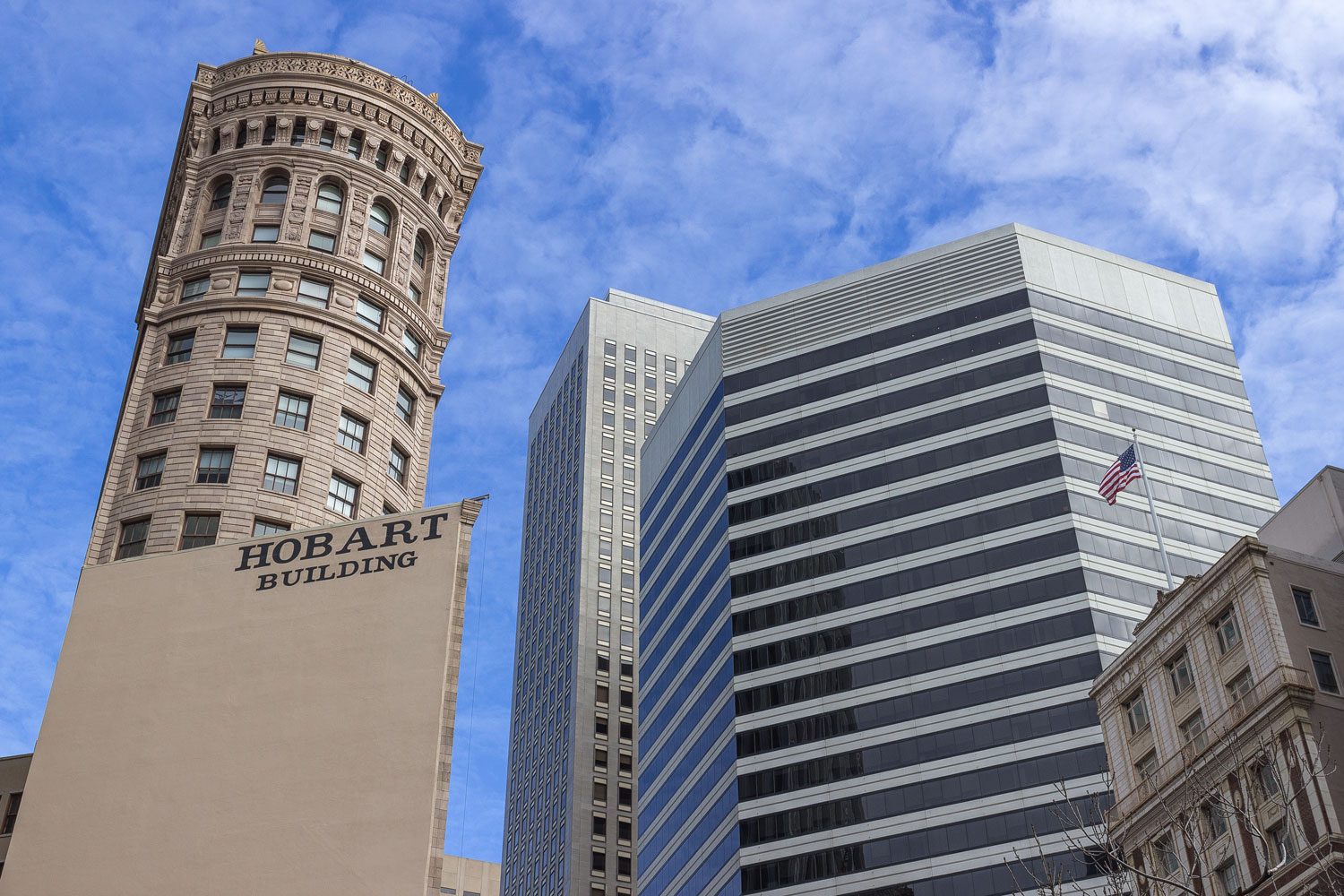
The brownish glass reflects a copper hue across the entire street.
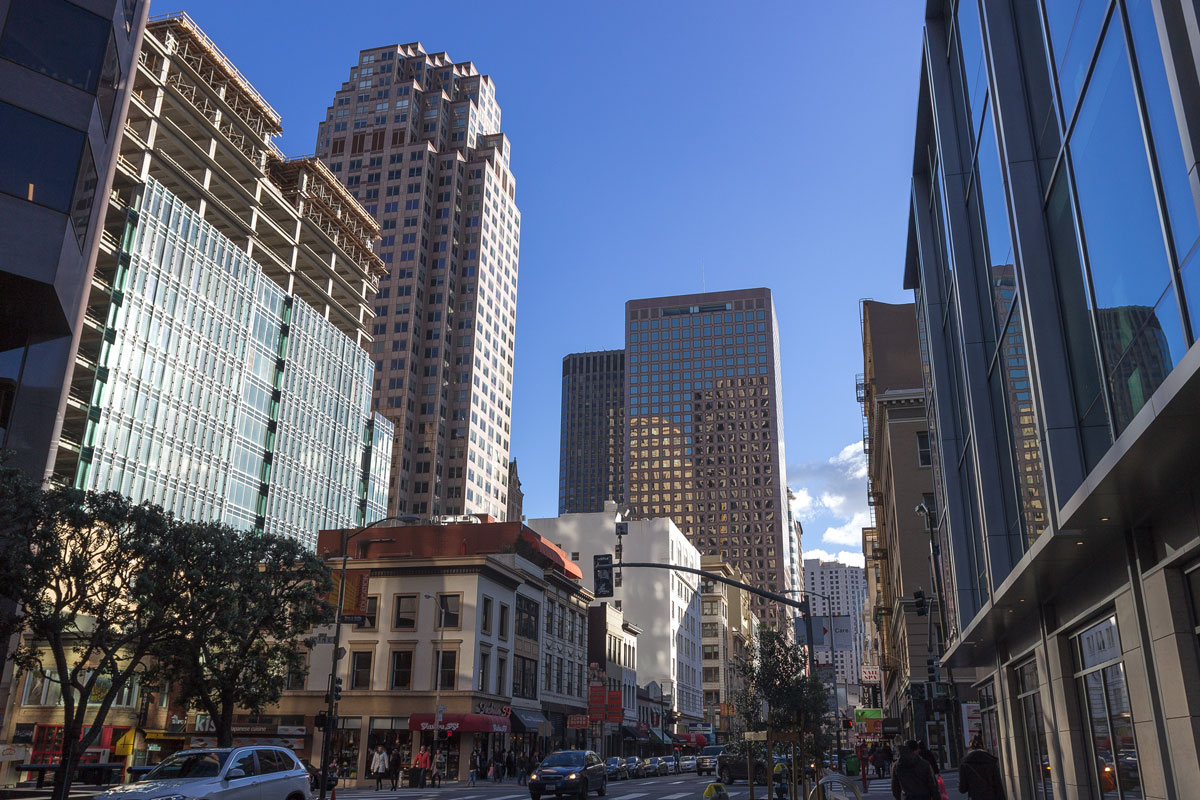
Classic financial architecture.
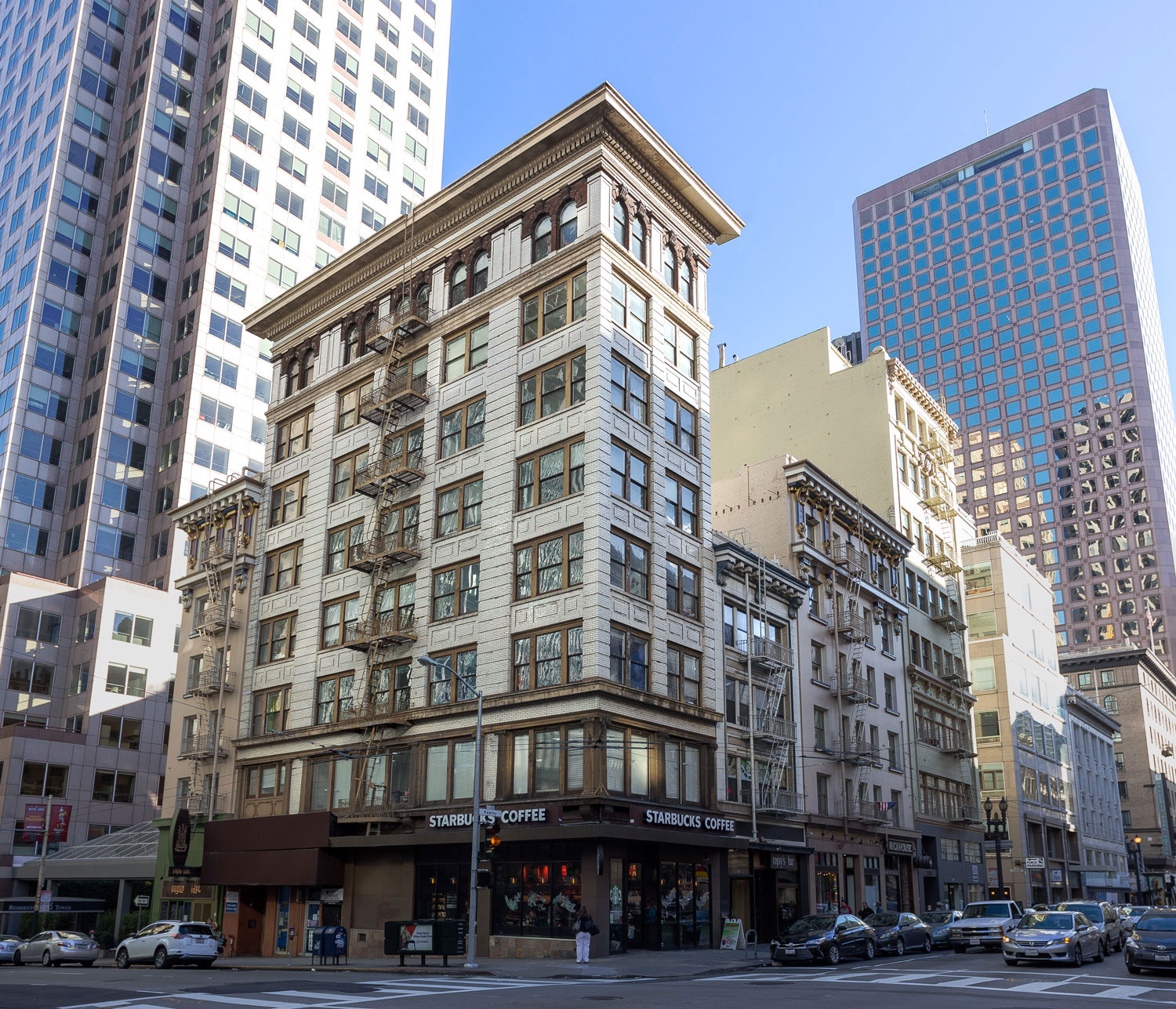
Cool.
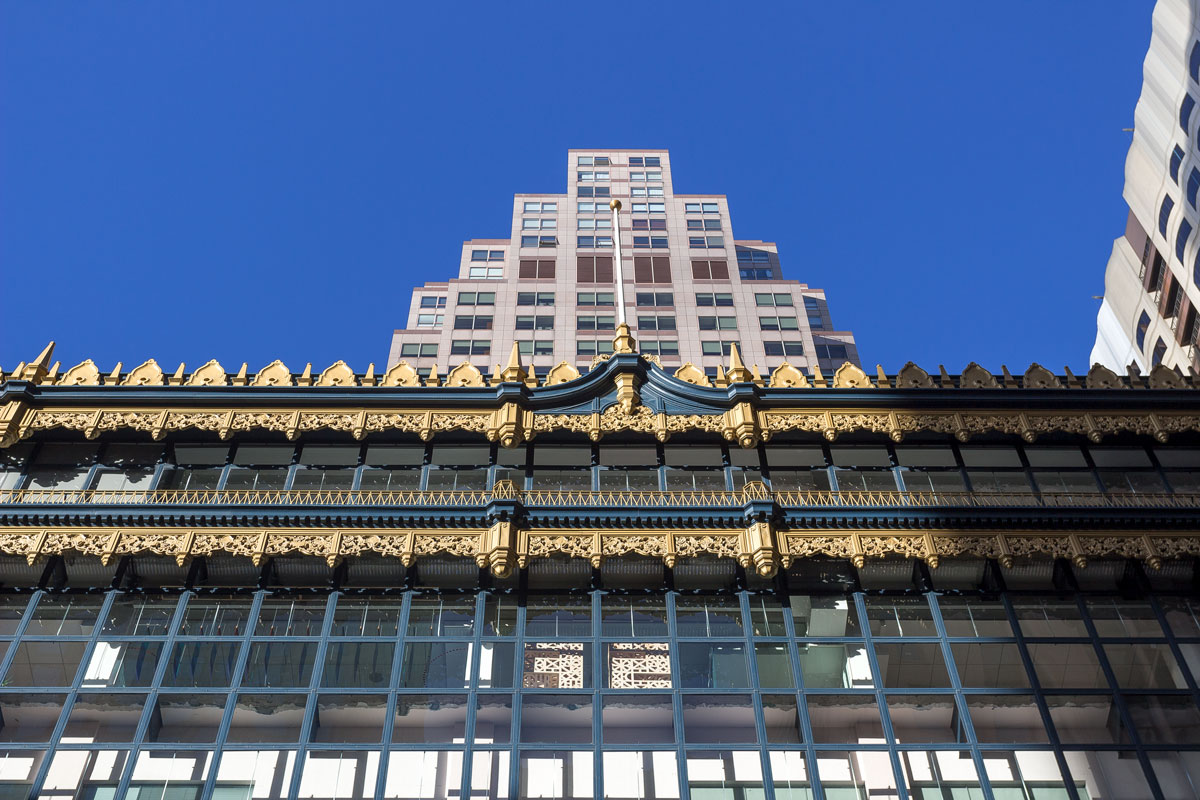
It is difficult to capture downtown: the sun cannot fully illuminate the building without touching the intricate cascade of neighboring skyscrapers’ variations.


Modern architecture.

American cities mostly resemble movie sets. A street sign just can’t elegantly hang on a pole like that!
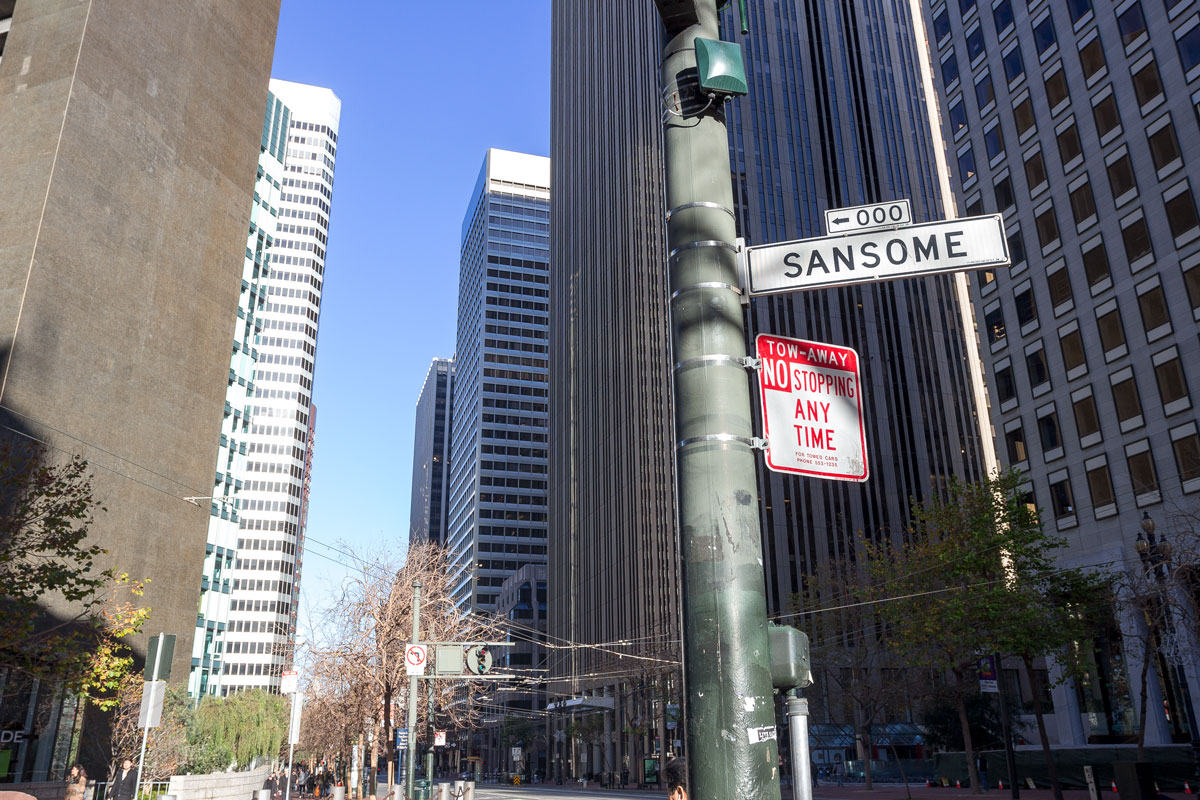
A smoking manhole. It looks as if steam has been intentionally released into it. The sewer system in New York is much worse, while manhole steaming occurs fairly rarely in San Francisco.

It’s autumn in downtown. Trees stand leafless.

Pedestrian crossing.


There is an armored-looking tram running downtown.


Telegraph Hill
The tower visible from Russian Hill is called the Coit Tower. It was built in honor of a woman named Coit, who served in the fire department.

The tower is located on Telegraph Hill. Once, instead of a tower on the hill, there was a semaphore that informed the city about ships entering the bay.
From the hill, there is a fantastic view of San Francisco.
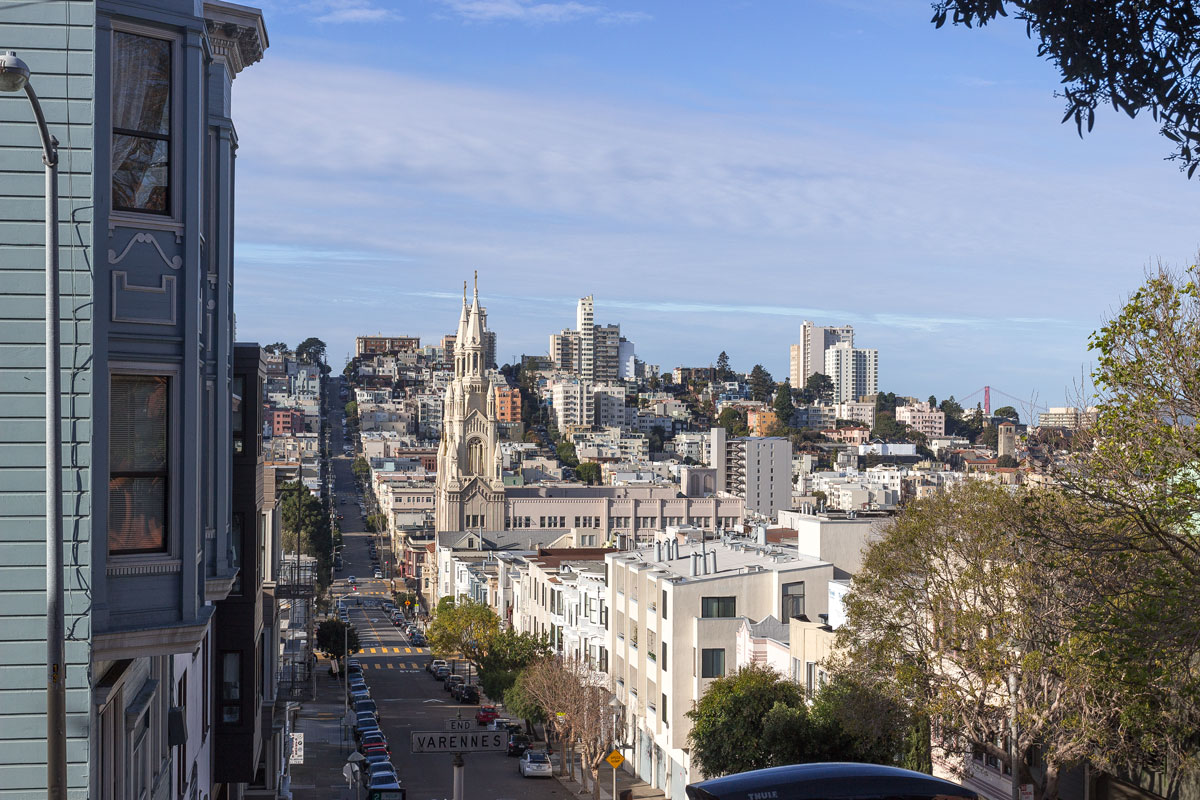
This view can be called iconic. It is widely printed on postcards.

Hilly streets interrupted by the horizon are classic San Francisco.
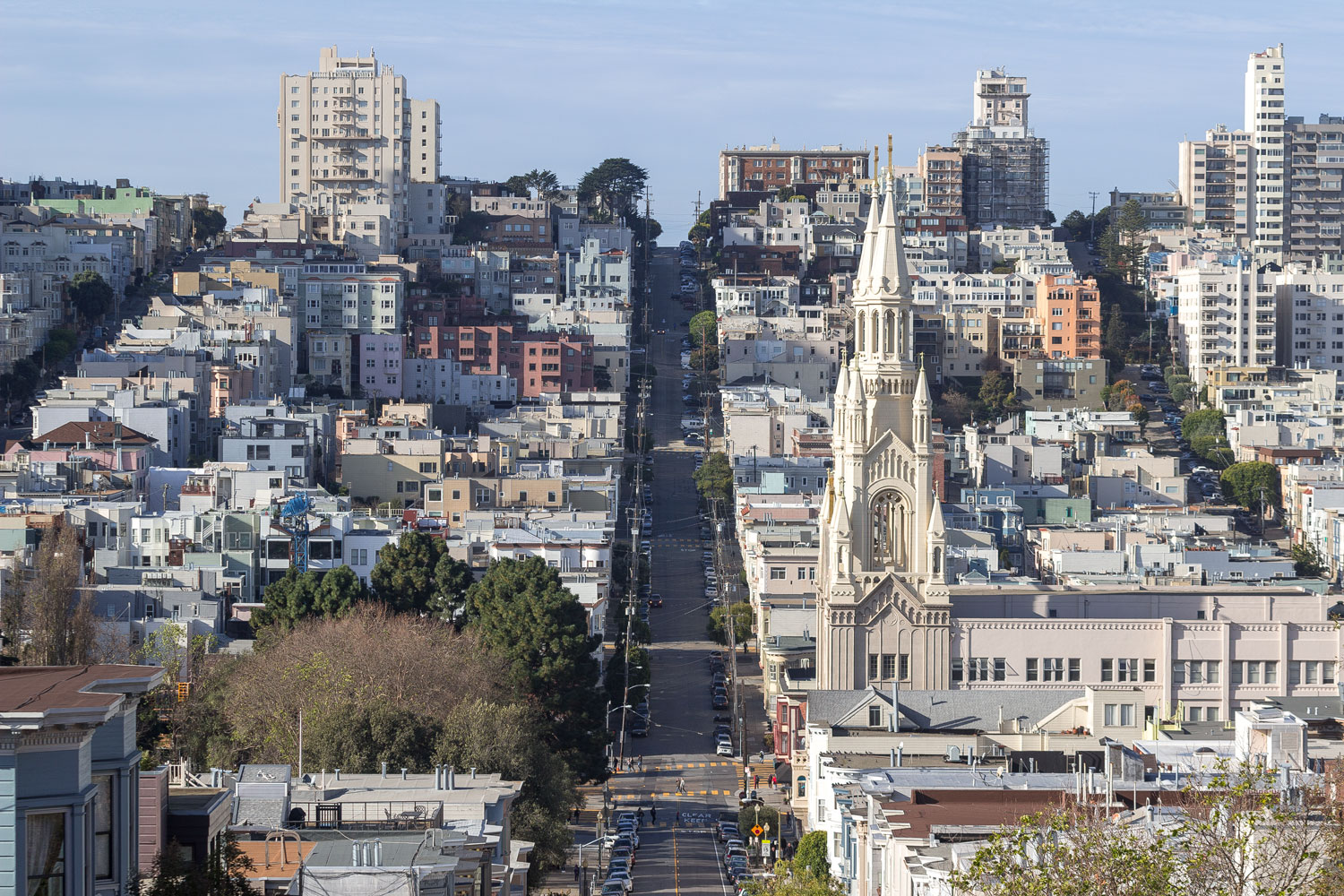
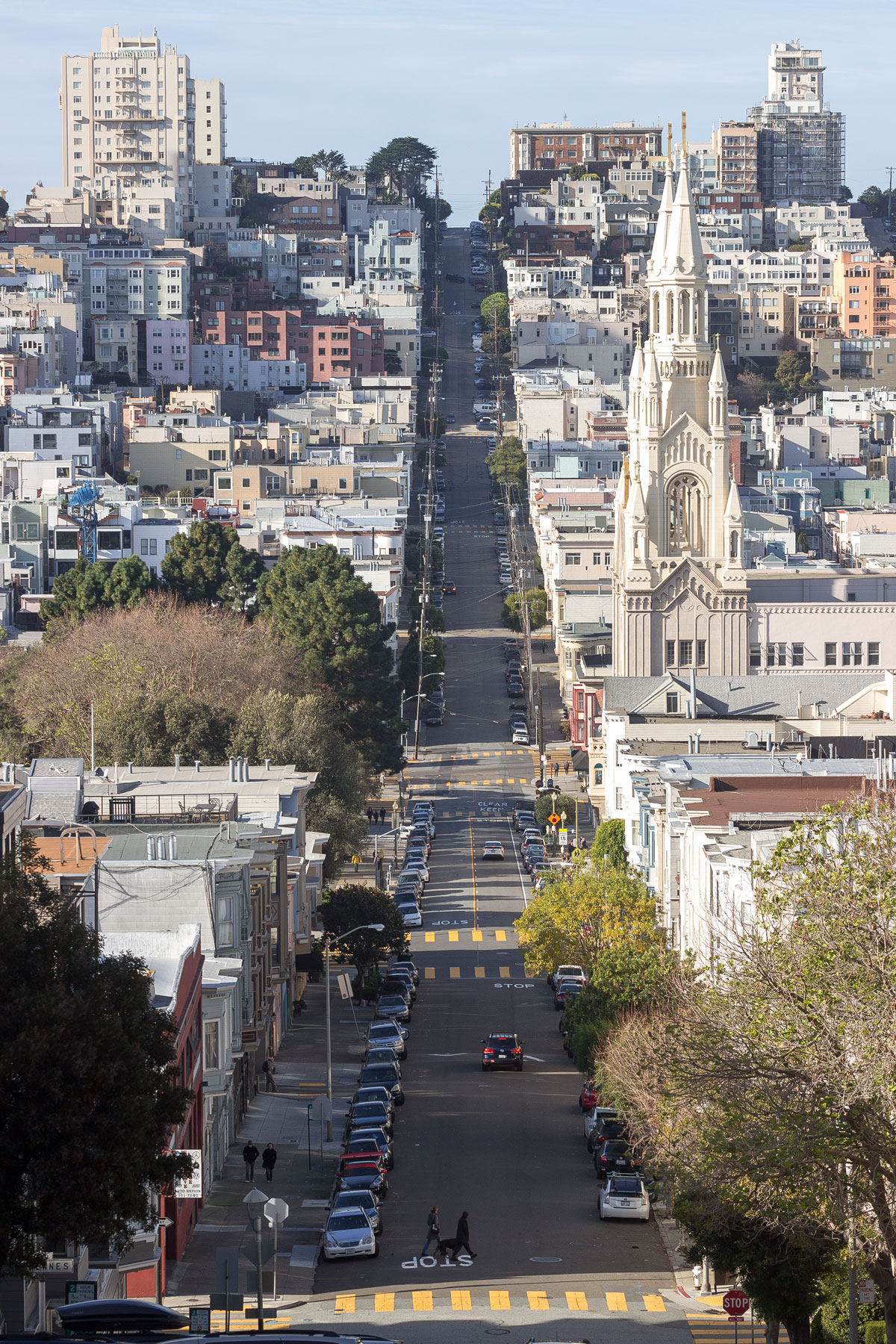
On the other side of the hill is a view of downtown. The best view of downtown.

Beyond the skyscrapers, the second bridge of San Francisco, the Bay Bridge, is visible. On the other side of the bay lies the city of Oakland.
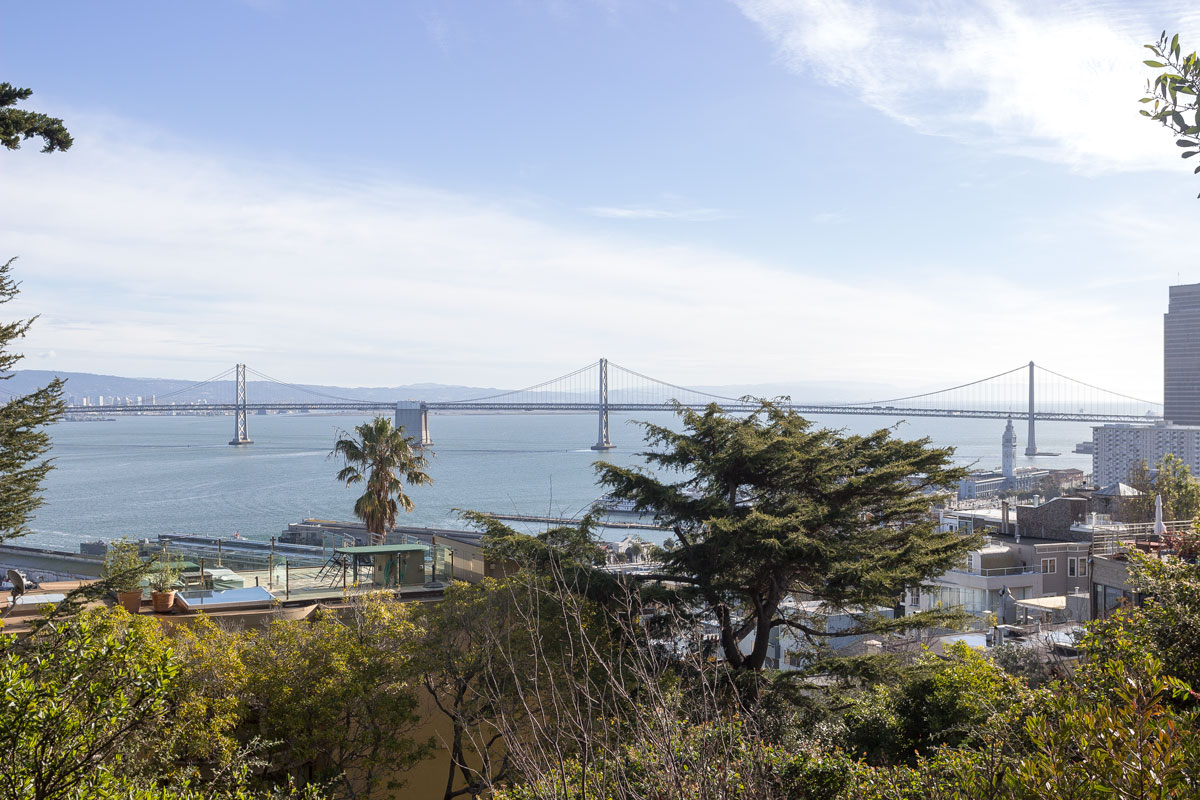
The Bay Bridge is purely a functional bridge. Few tourists are even aware of its existence. The Bay Bridge was opened six months before the Golden Gate Bridge. The simultaneous appearance of the two bridges dramatically transformed San Francisco by connecting the fragmented California across the Golden Bay.
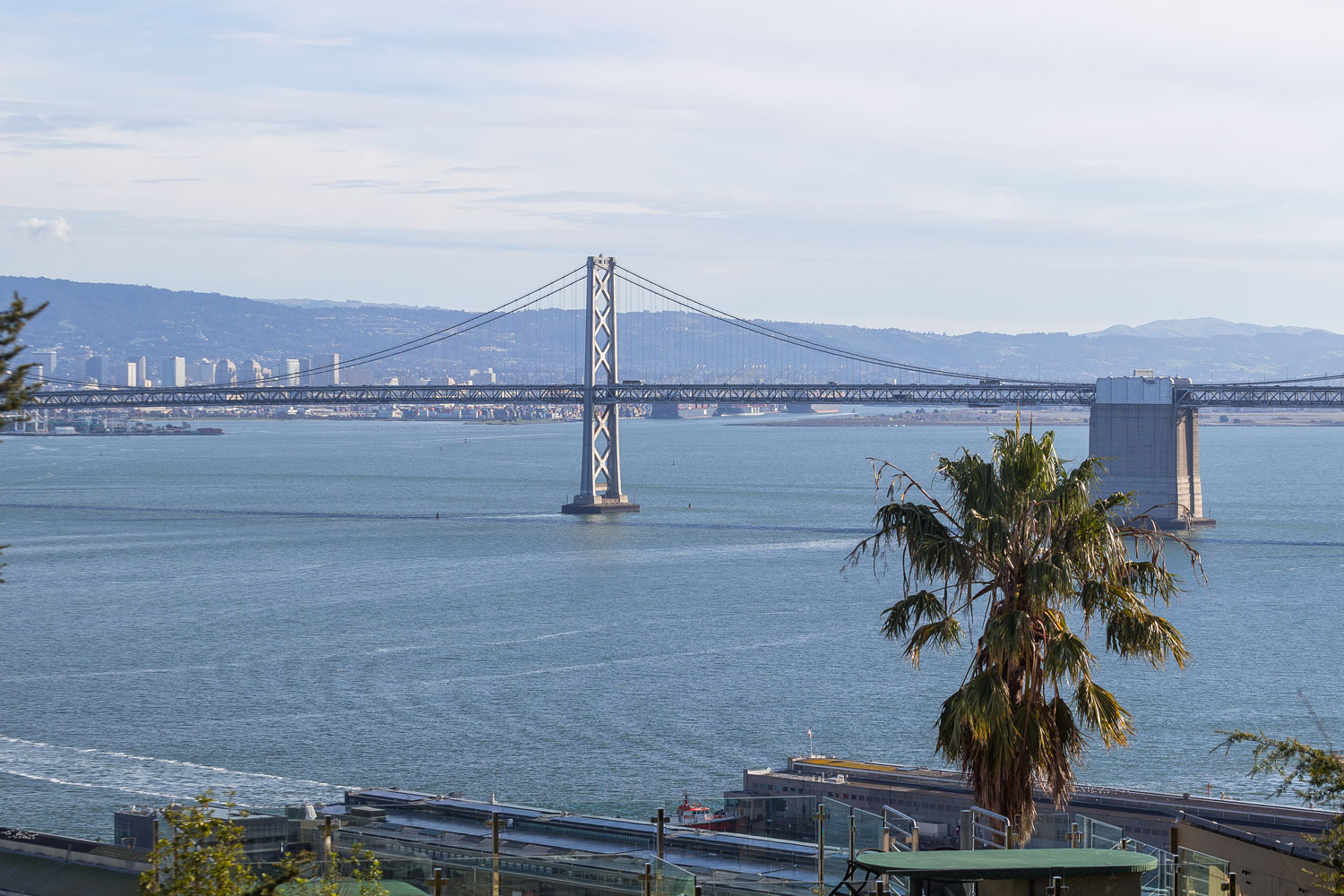
The main symbol of San Francisco, the Golden Gate Bridge, is also beautifully visible from the hill.

It seems that I promised a separate chapter about it?
